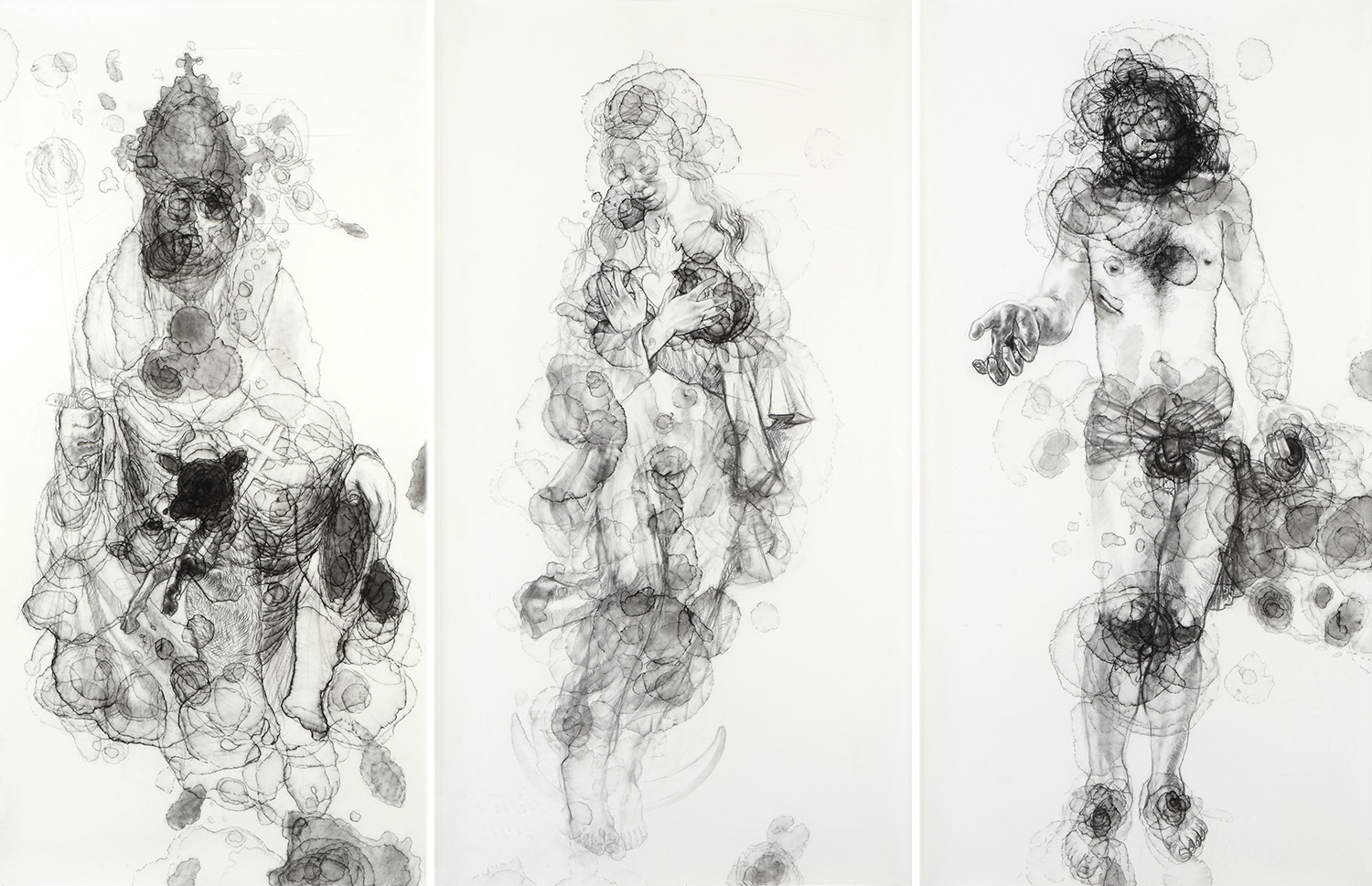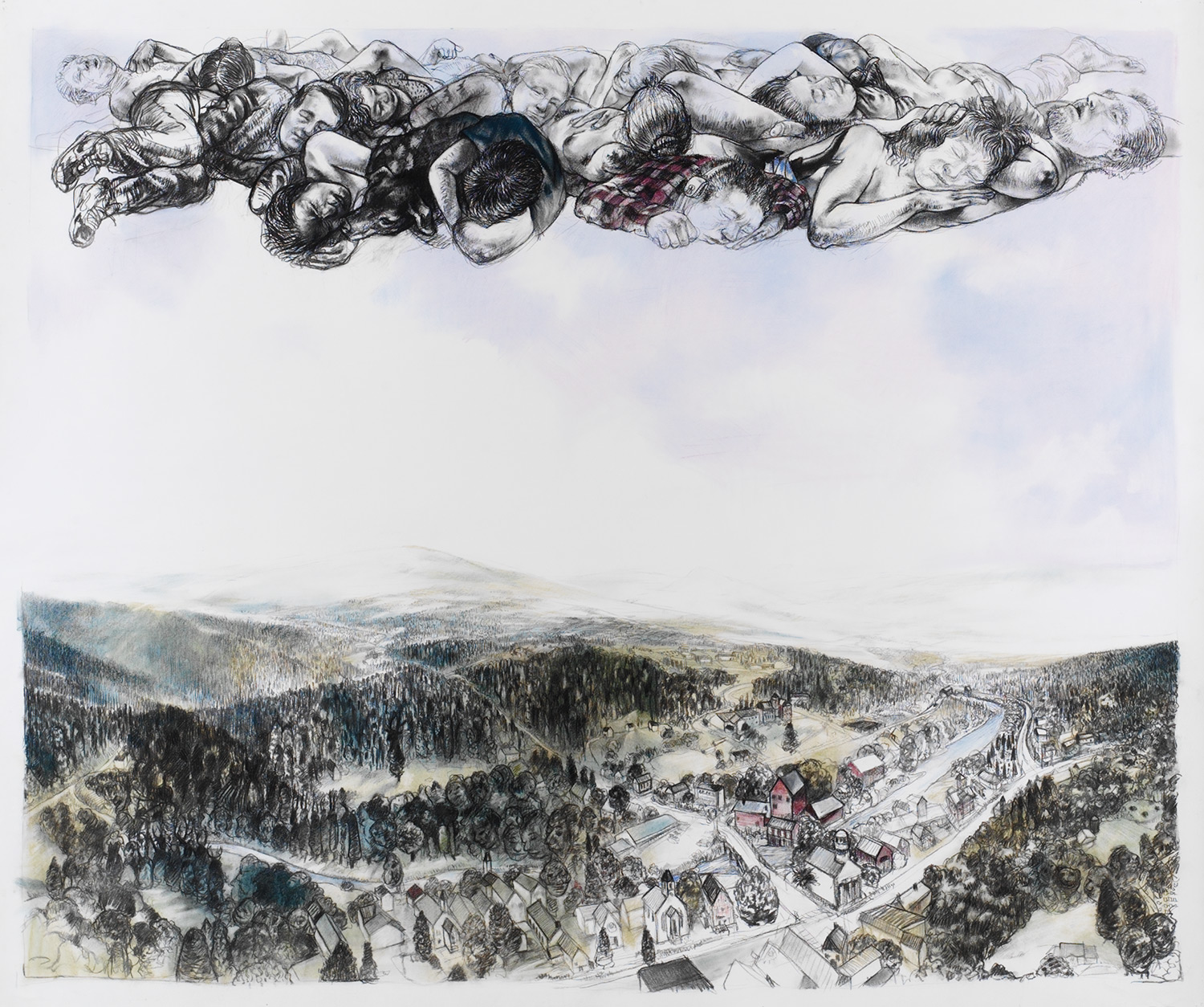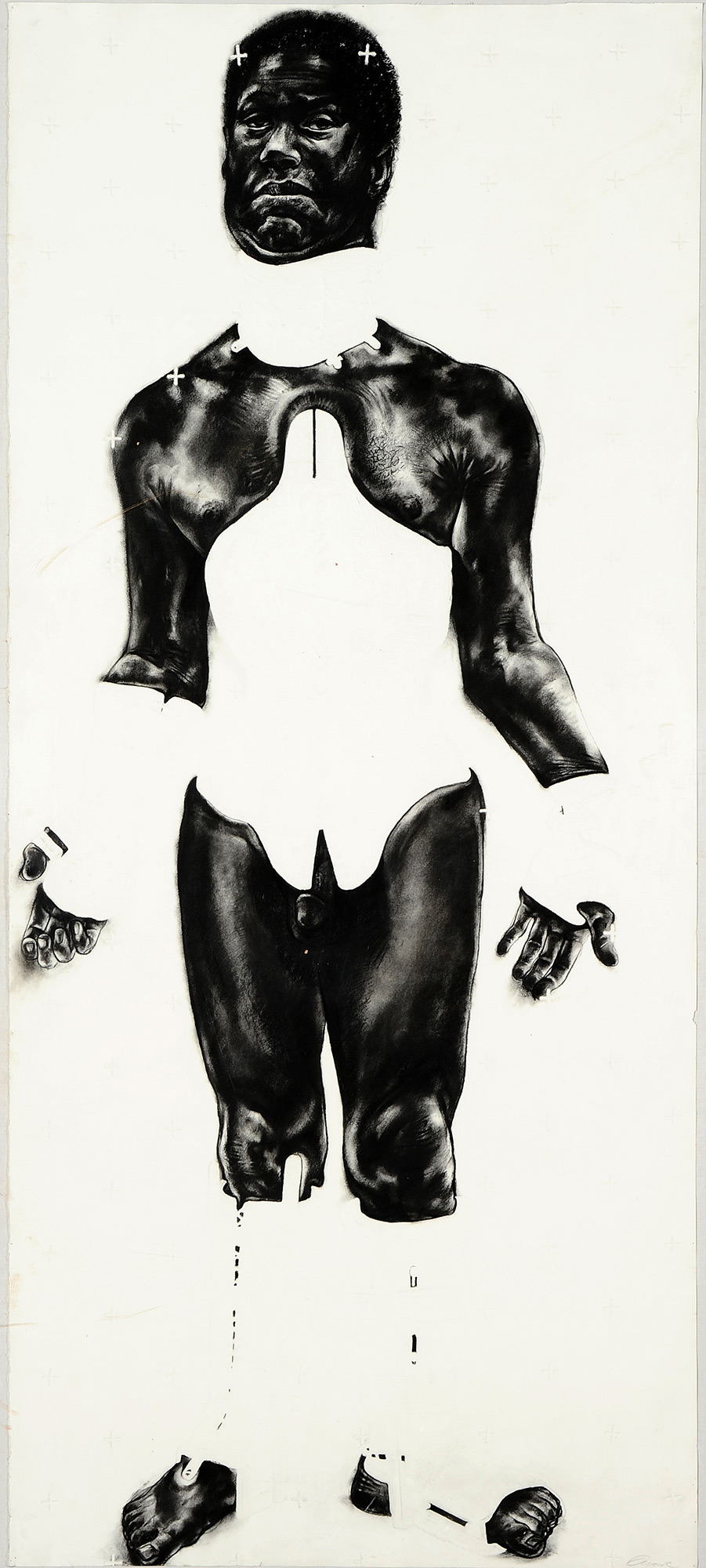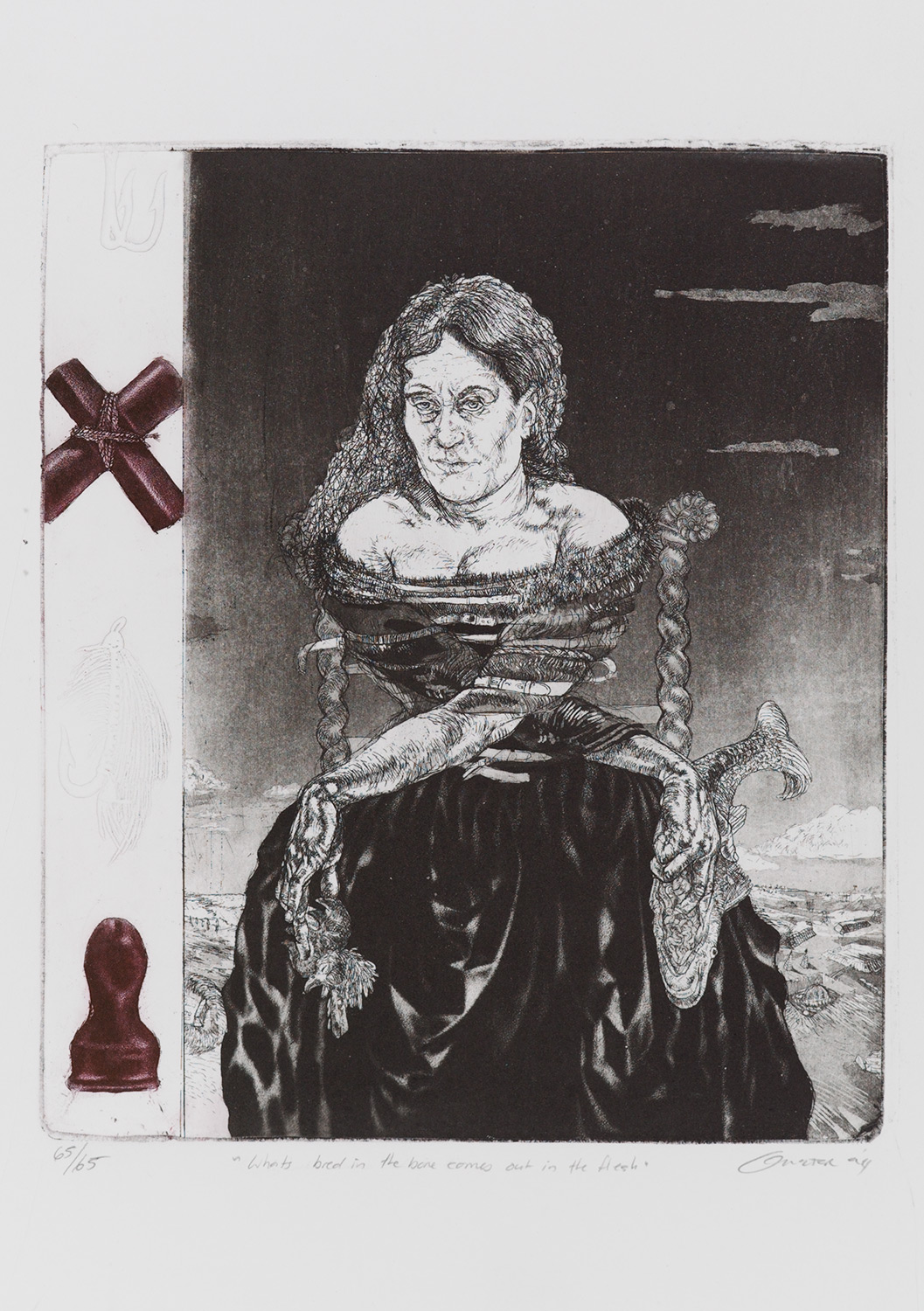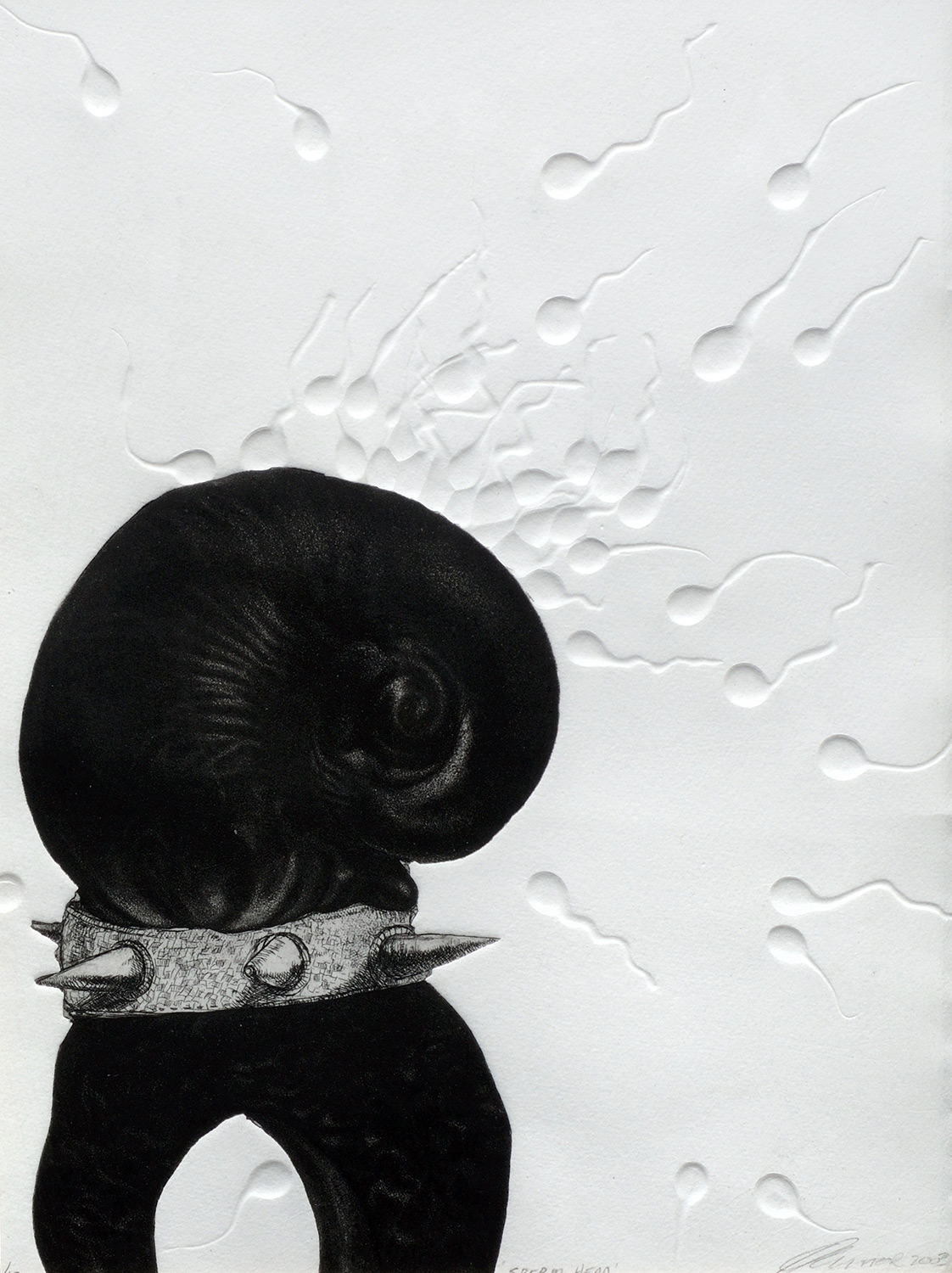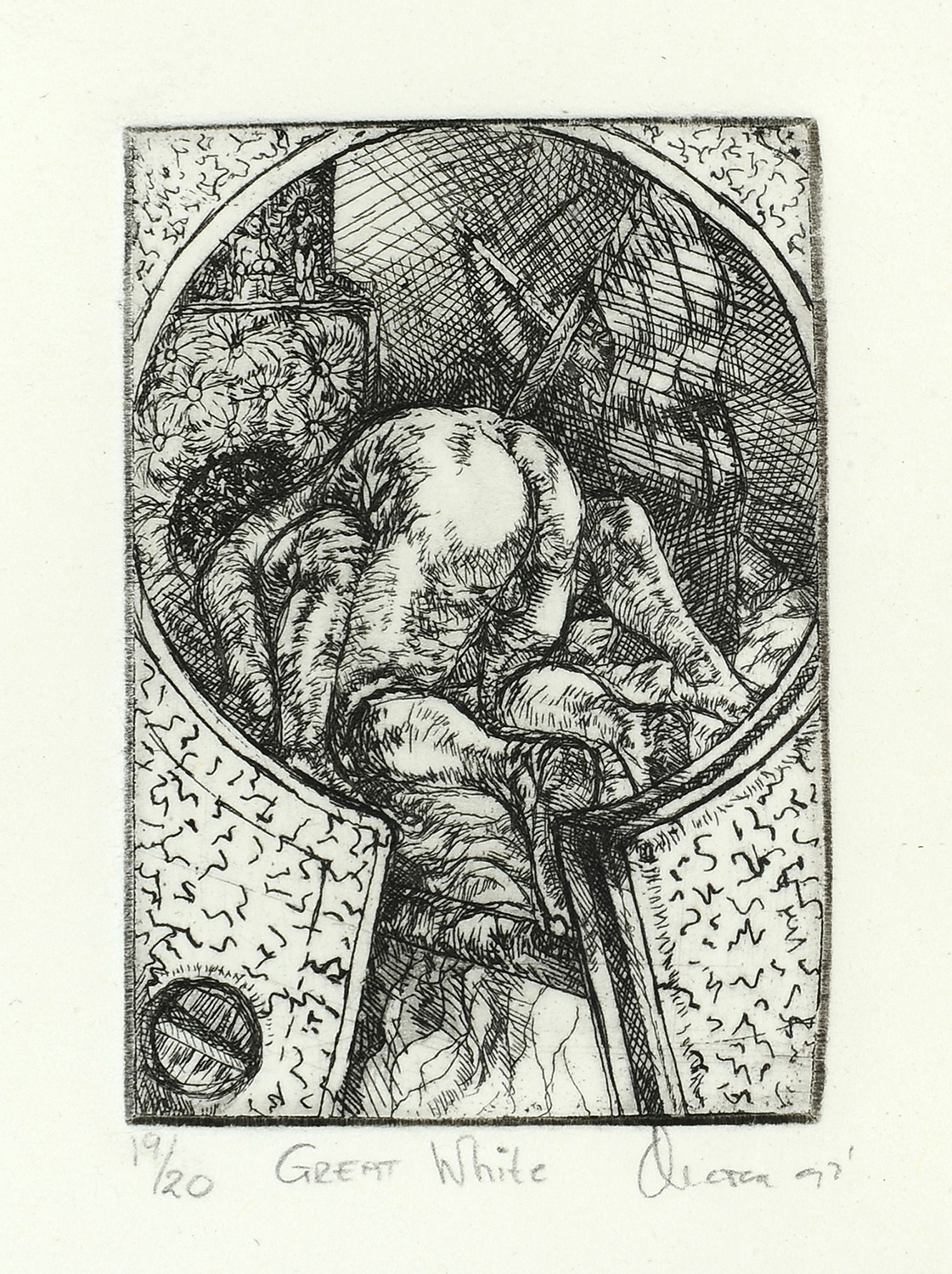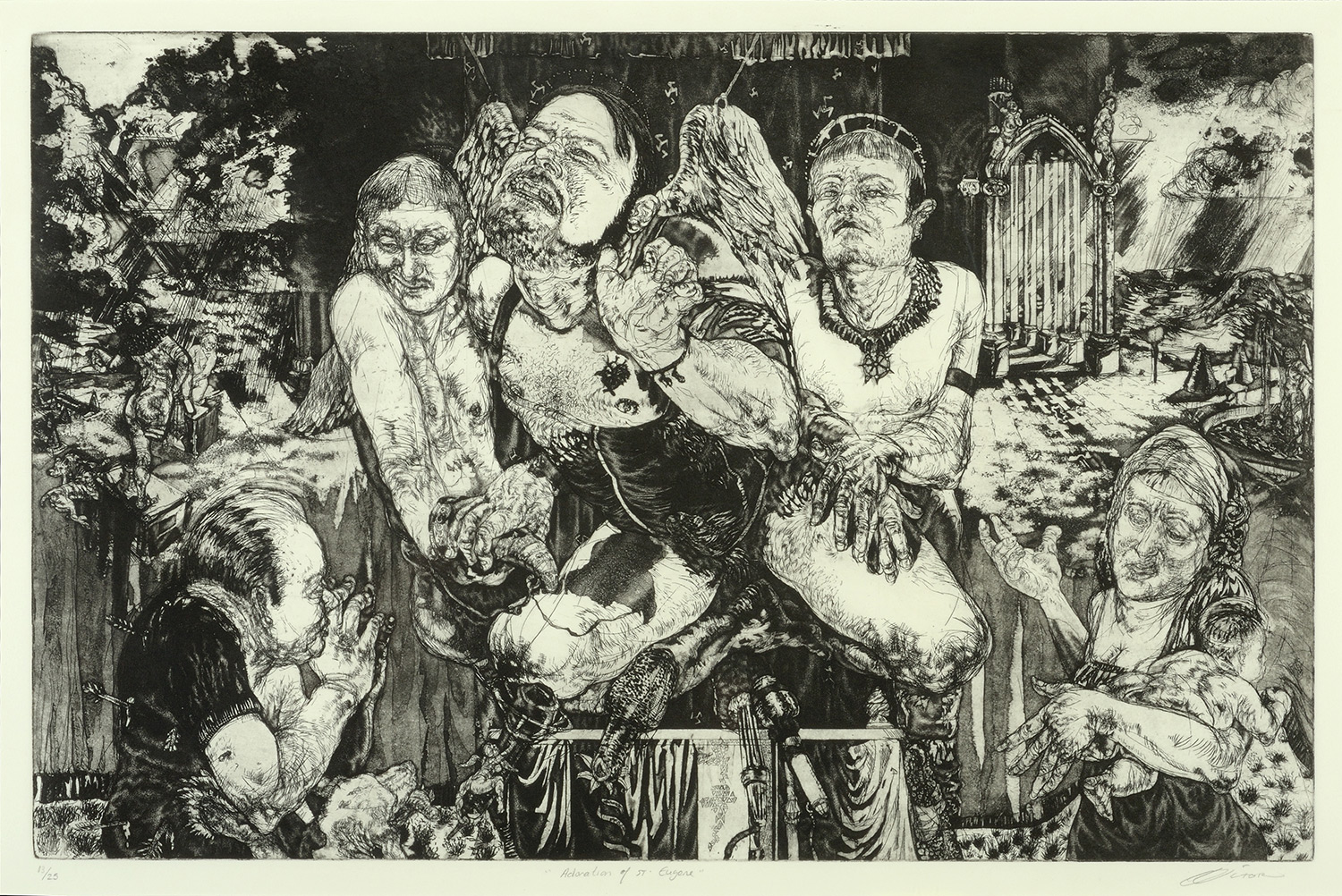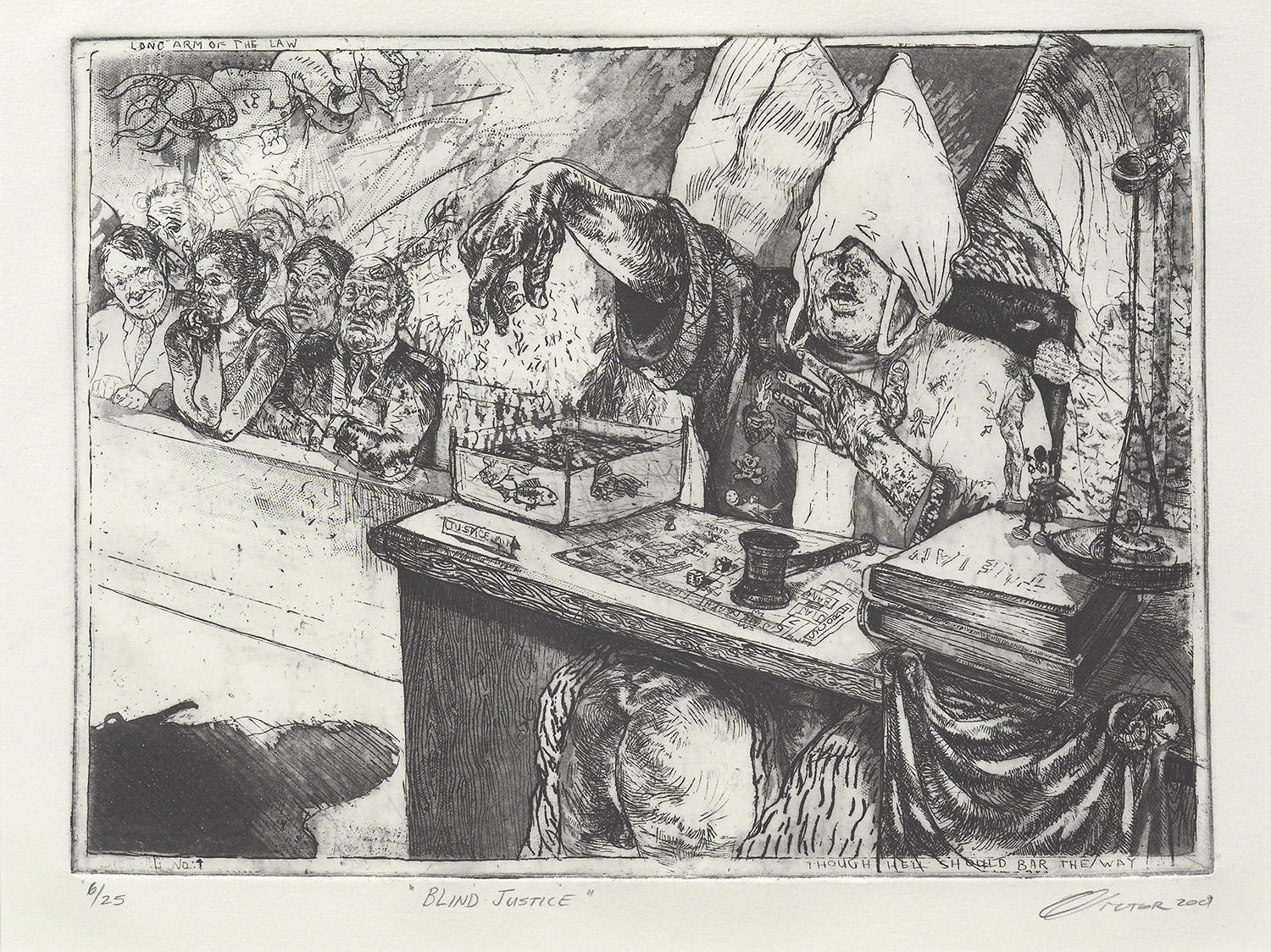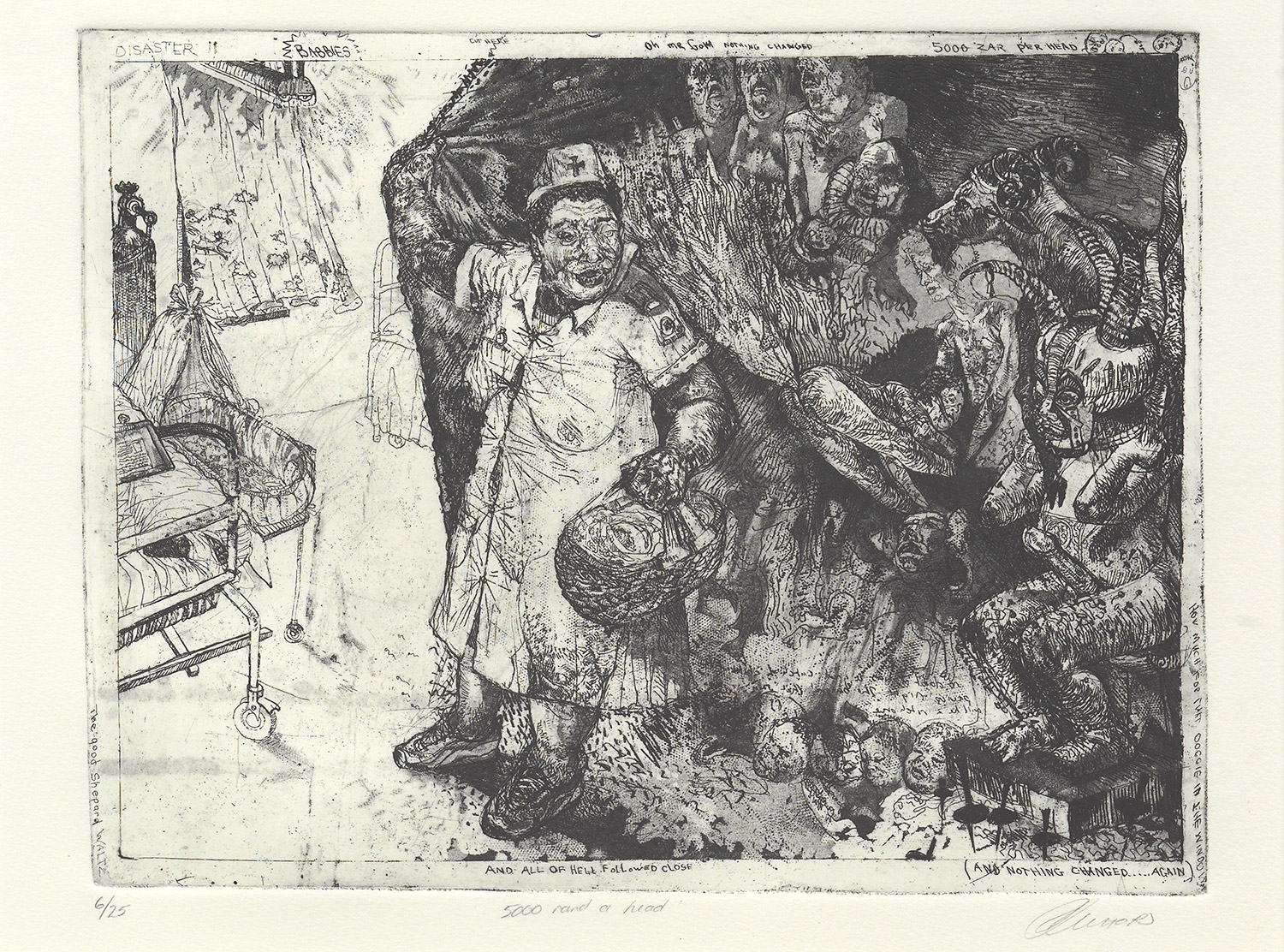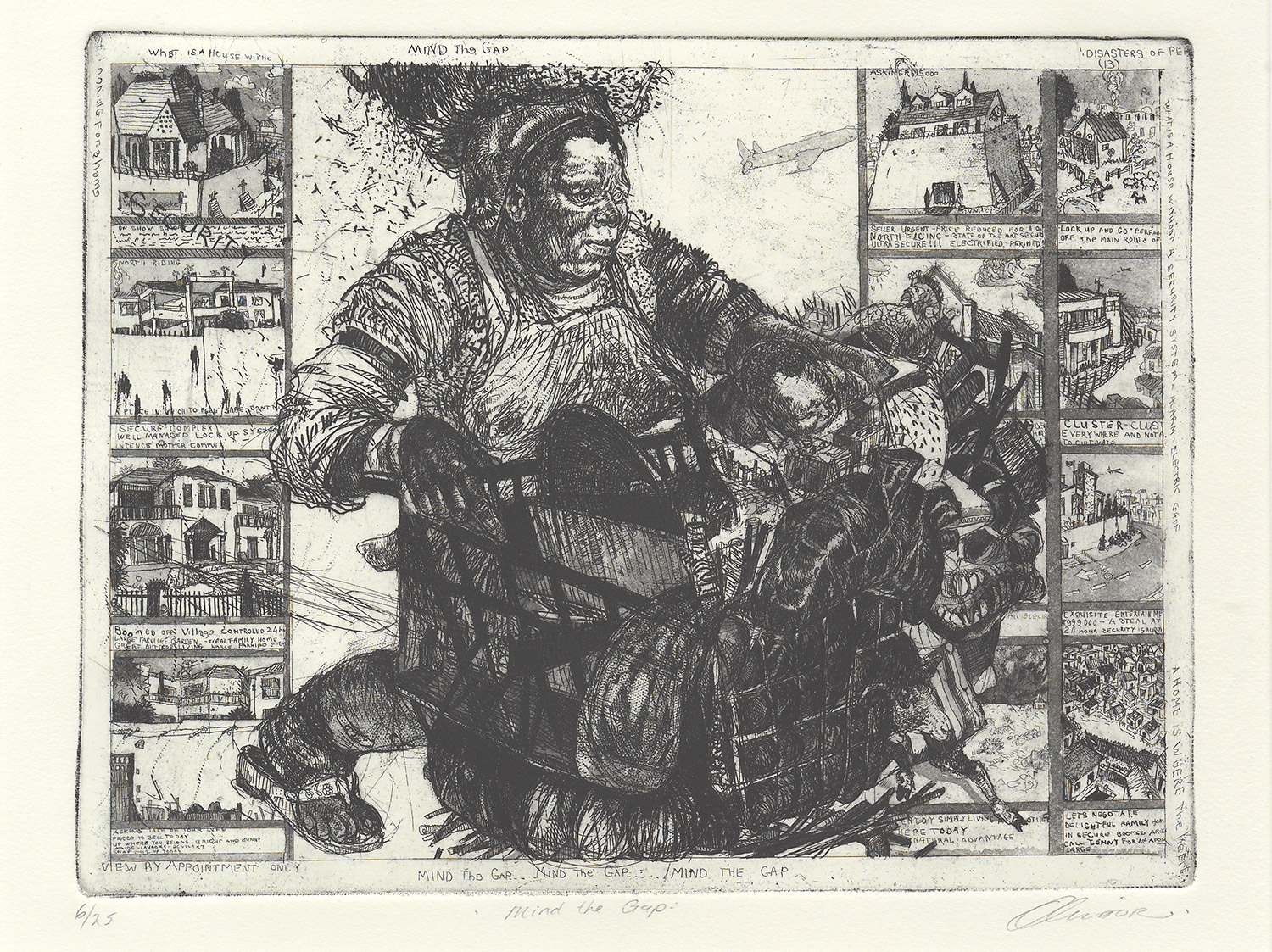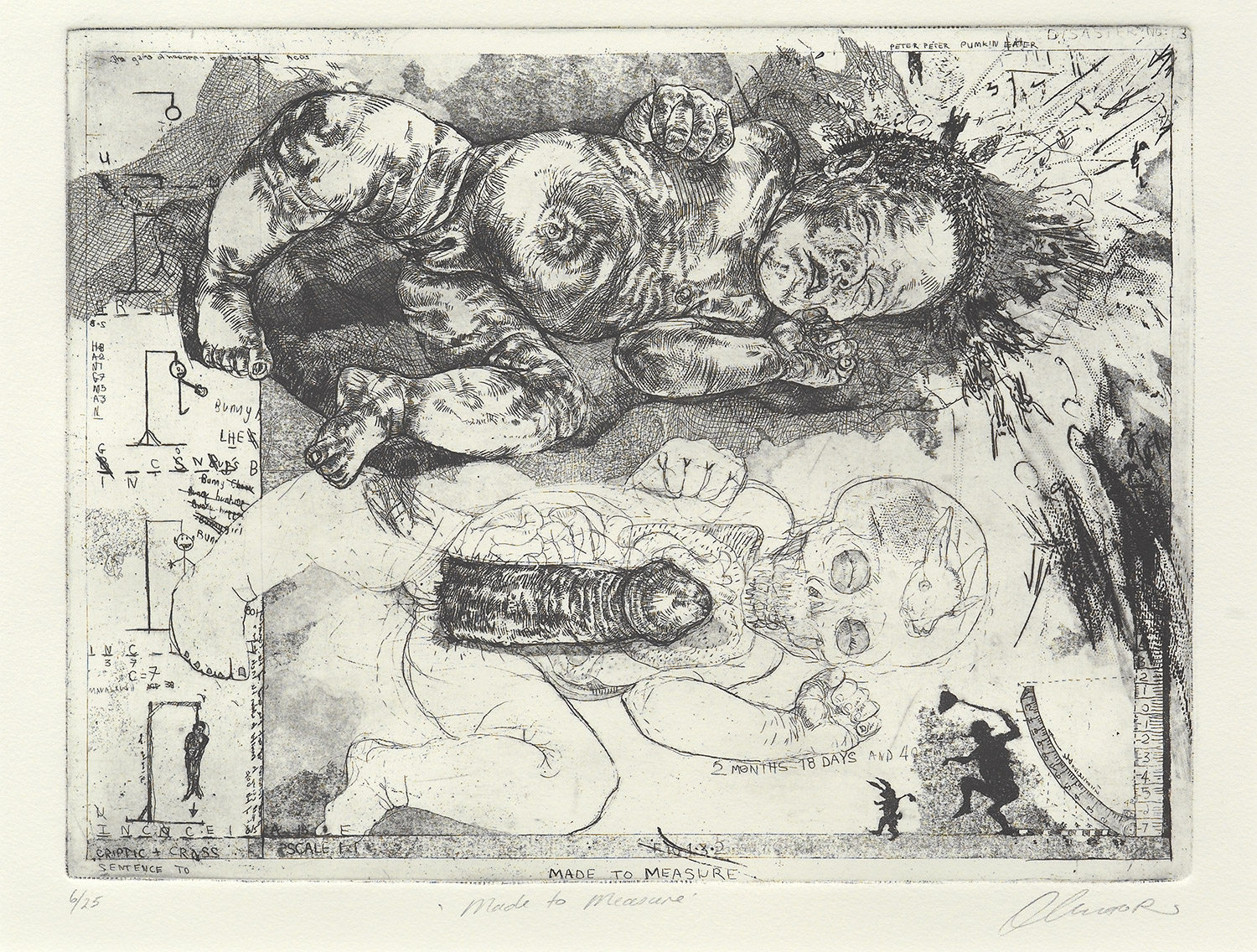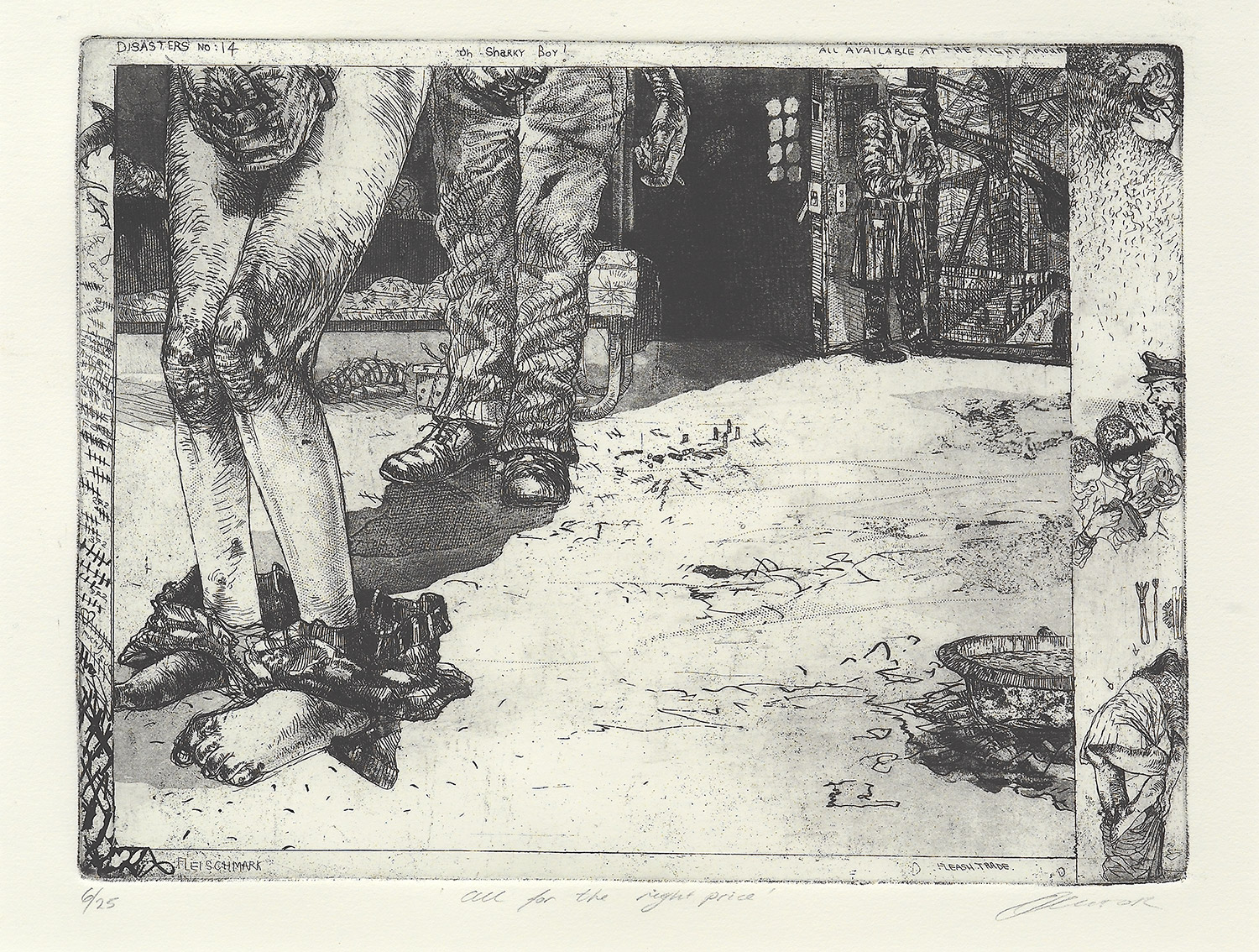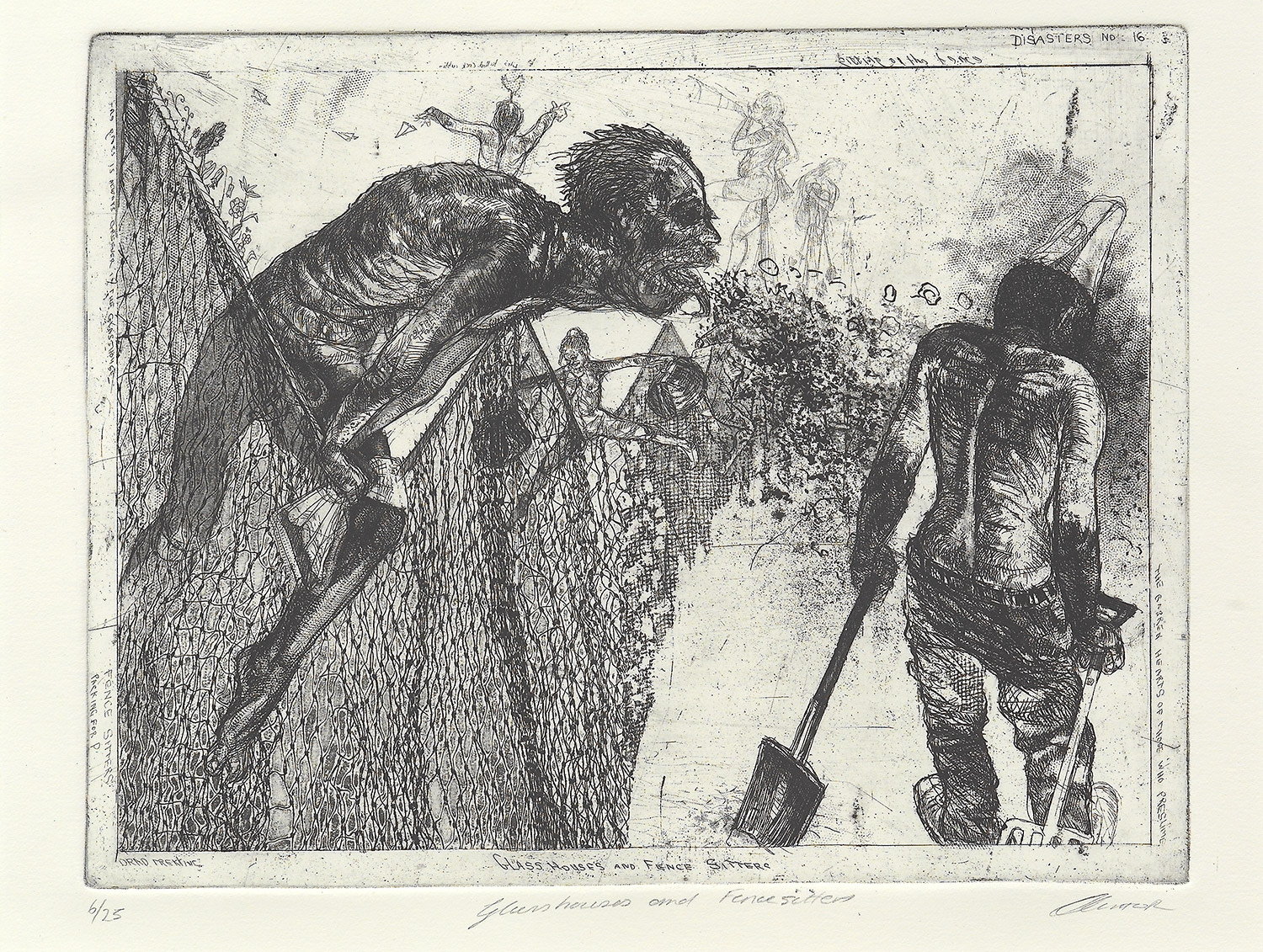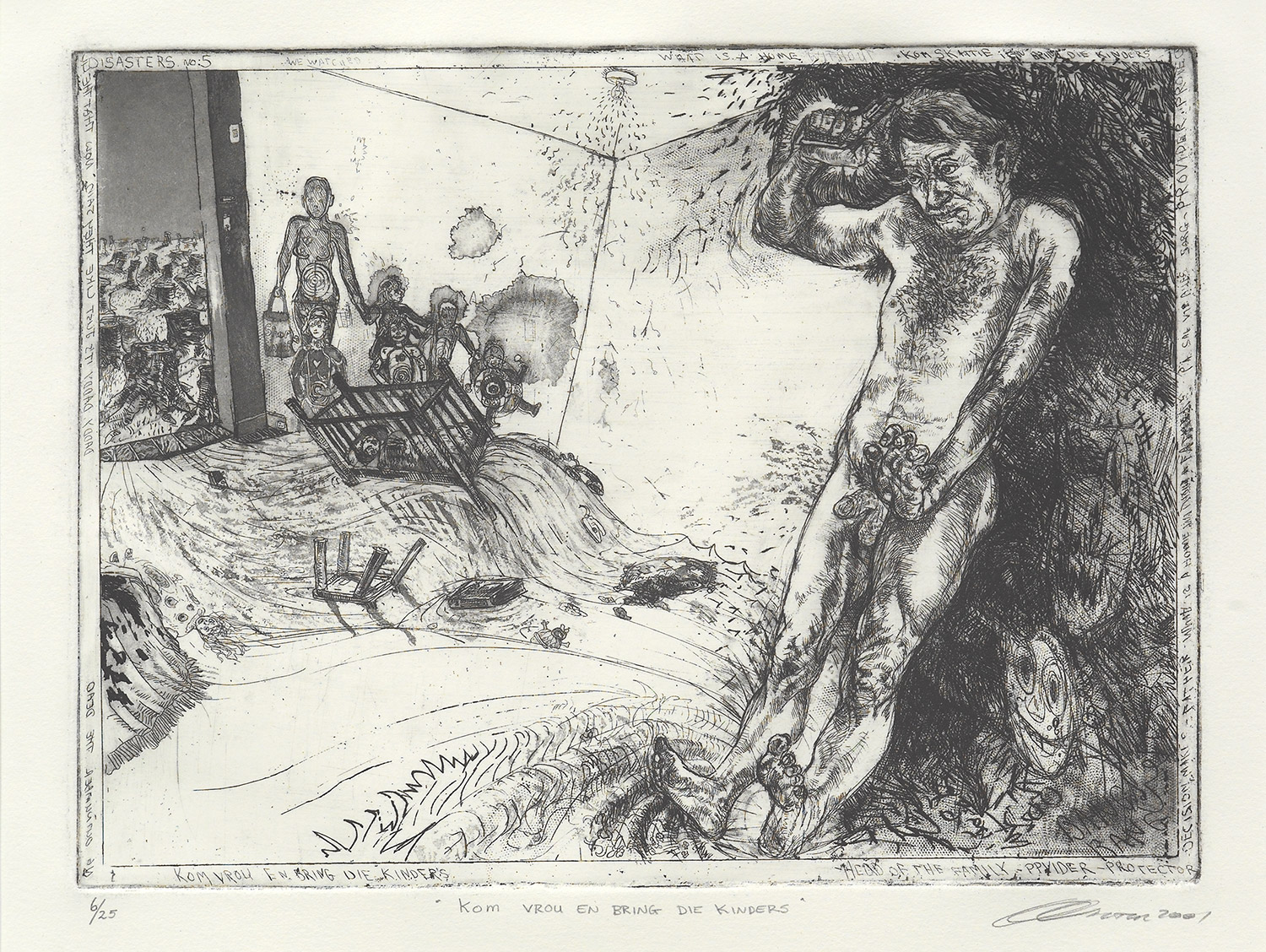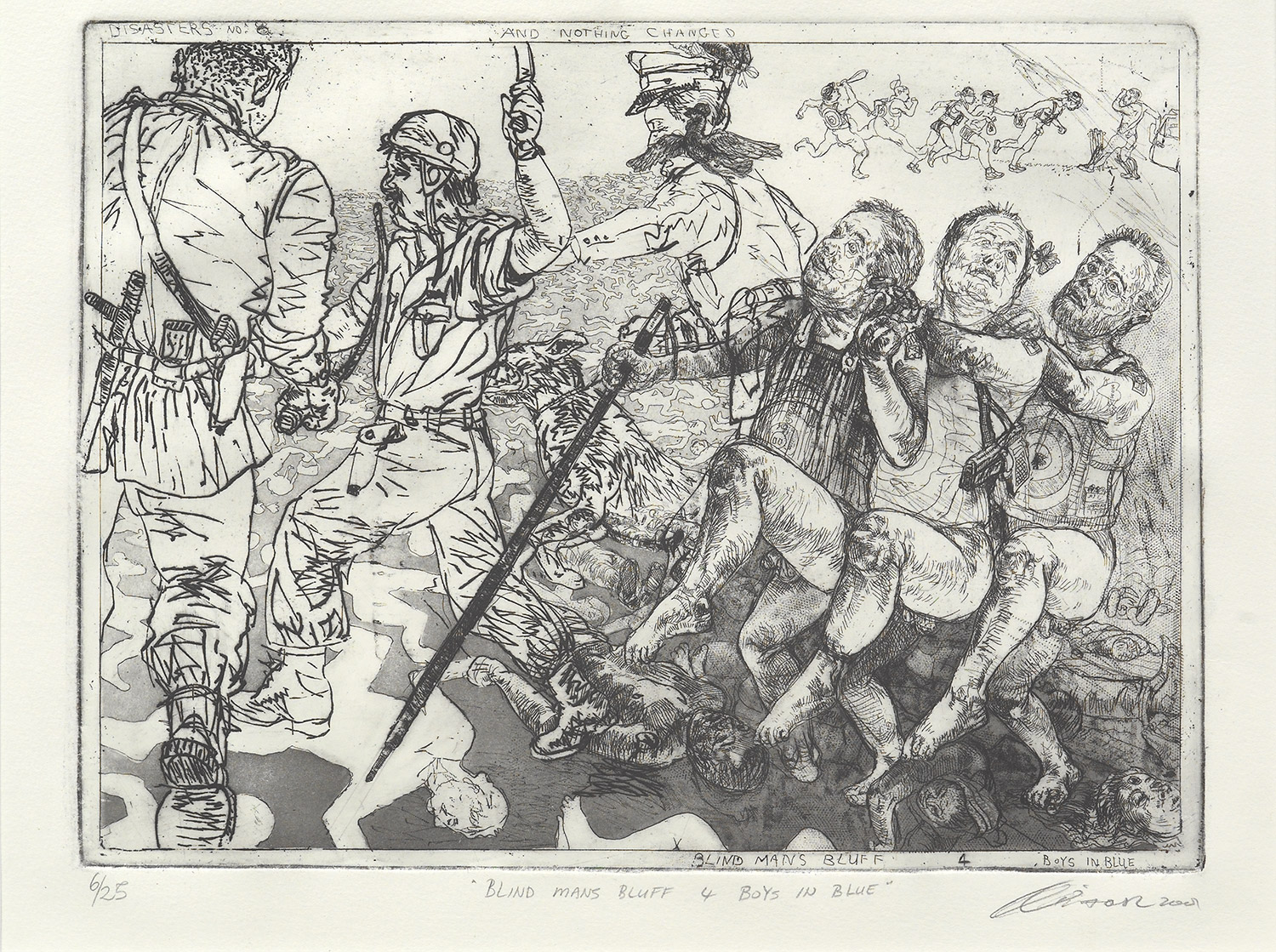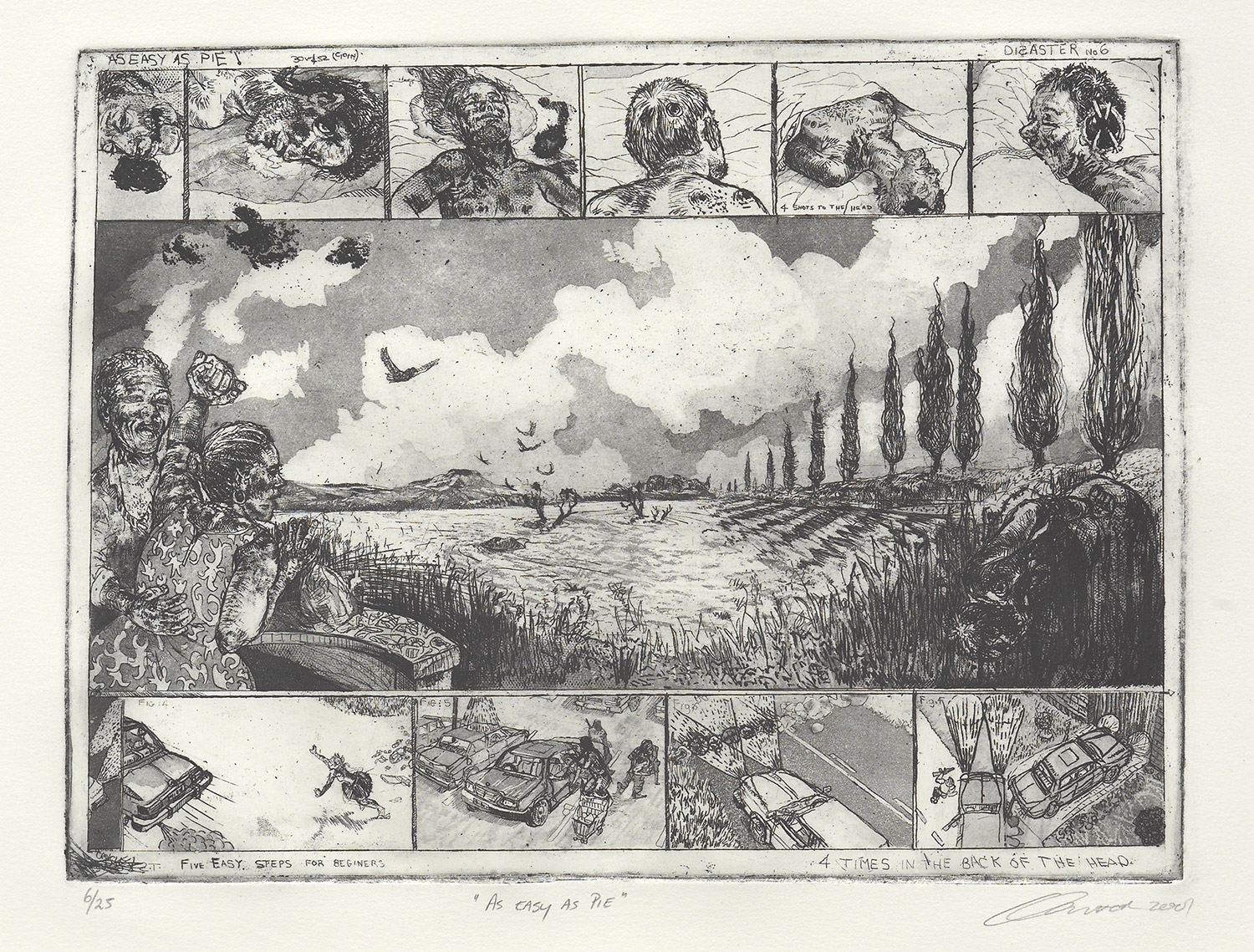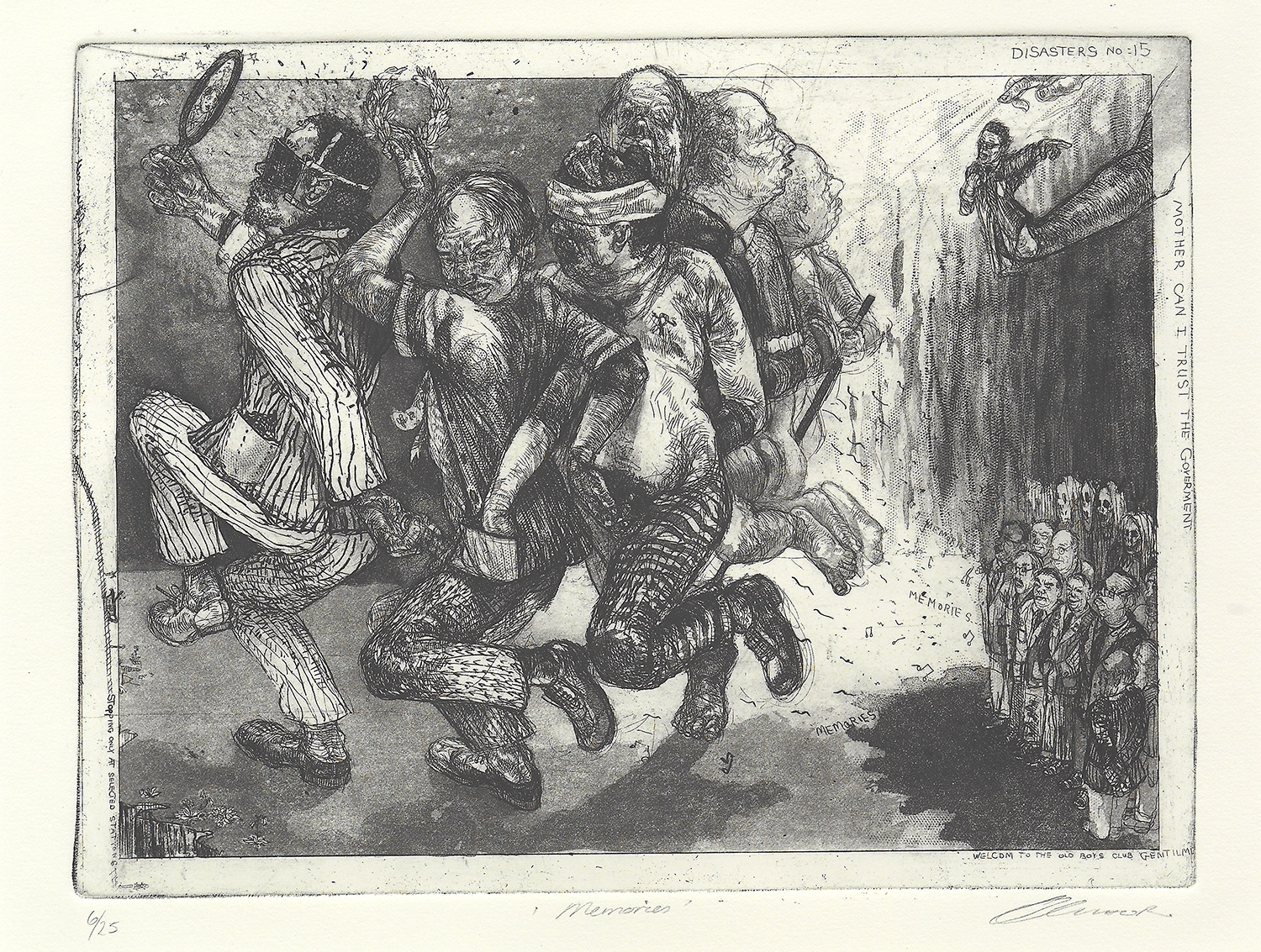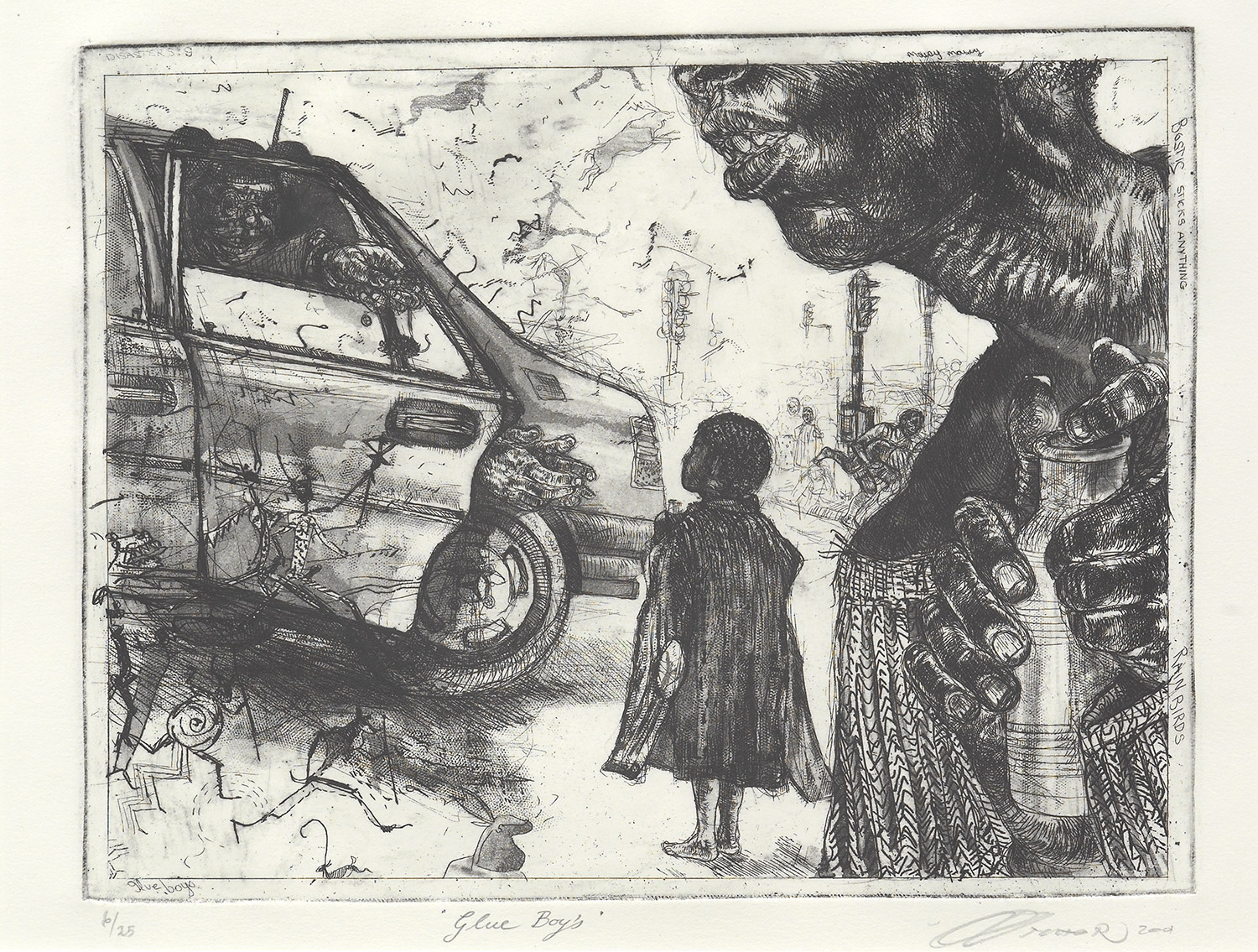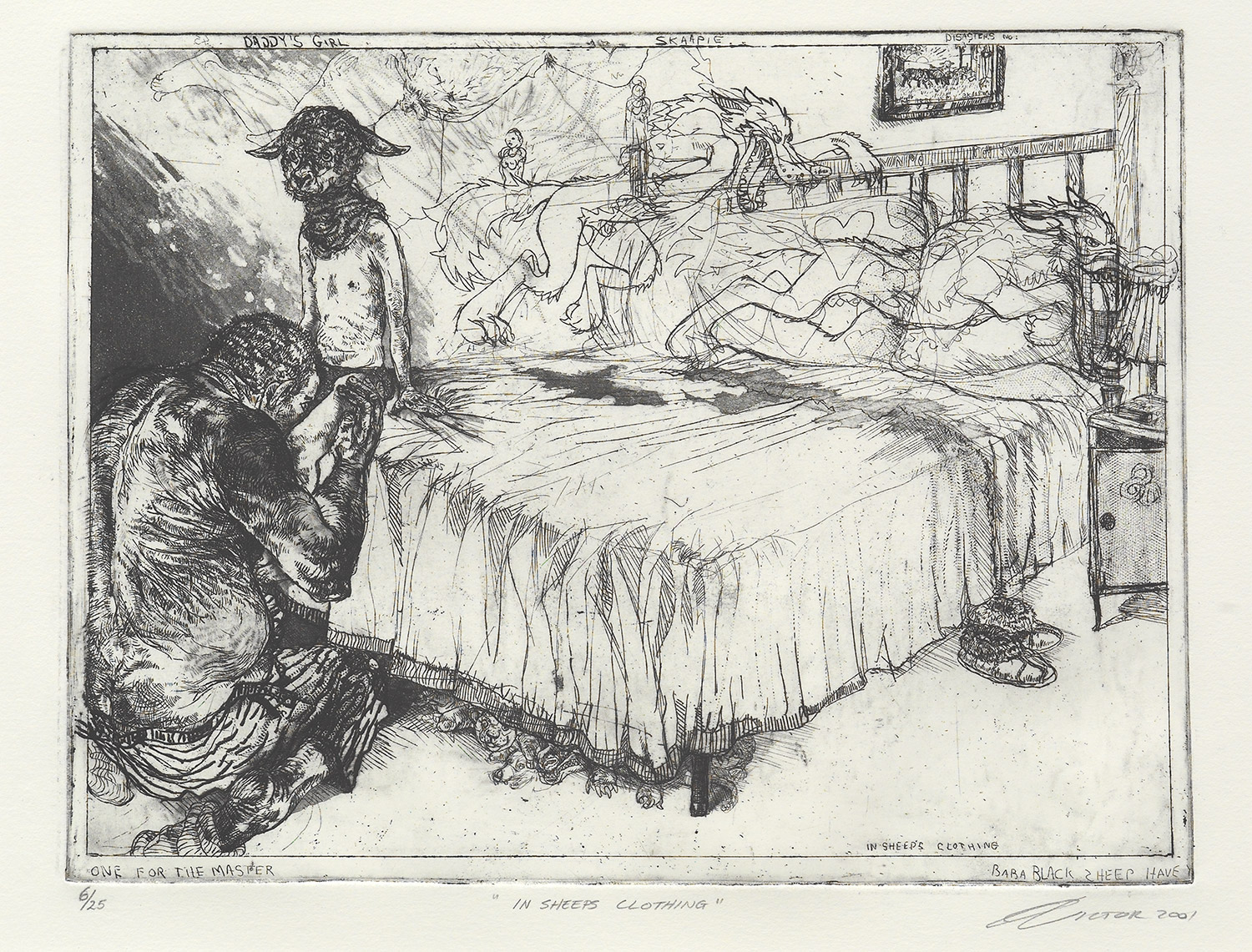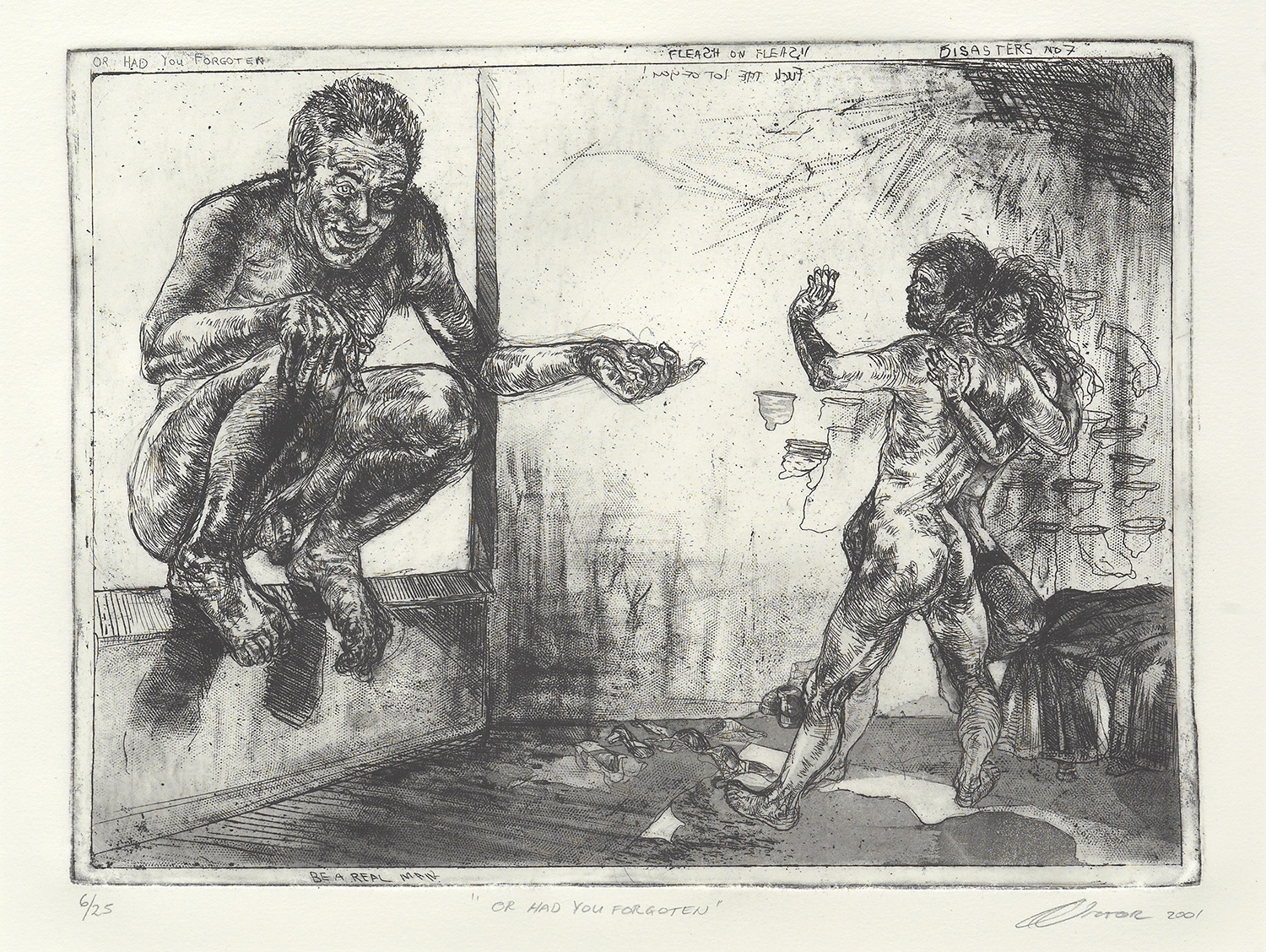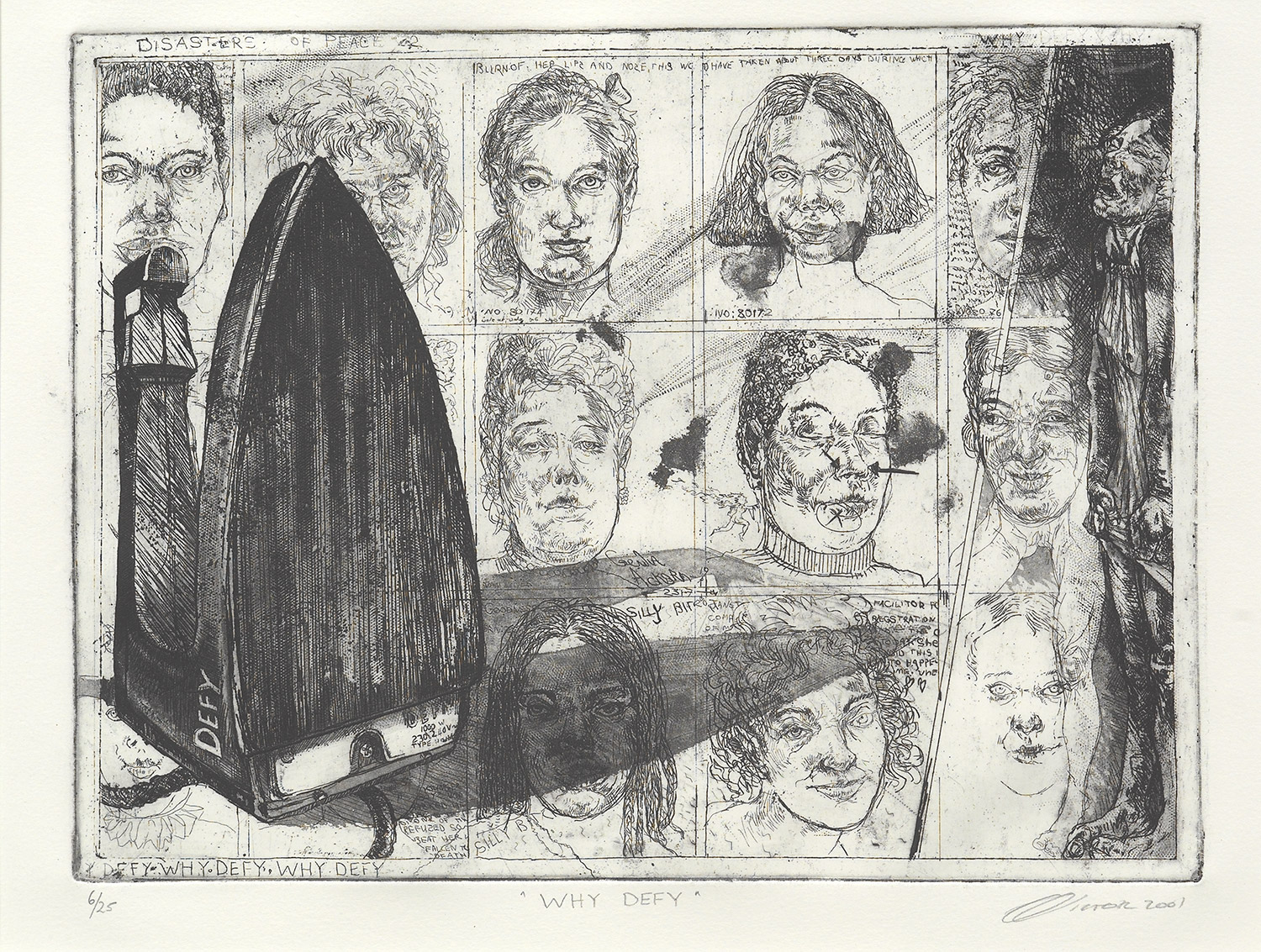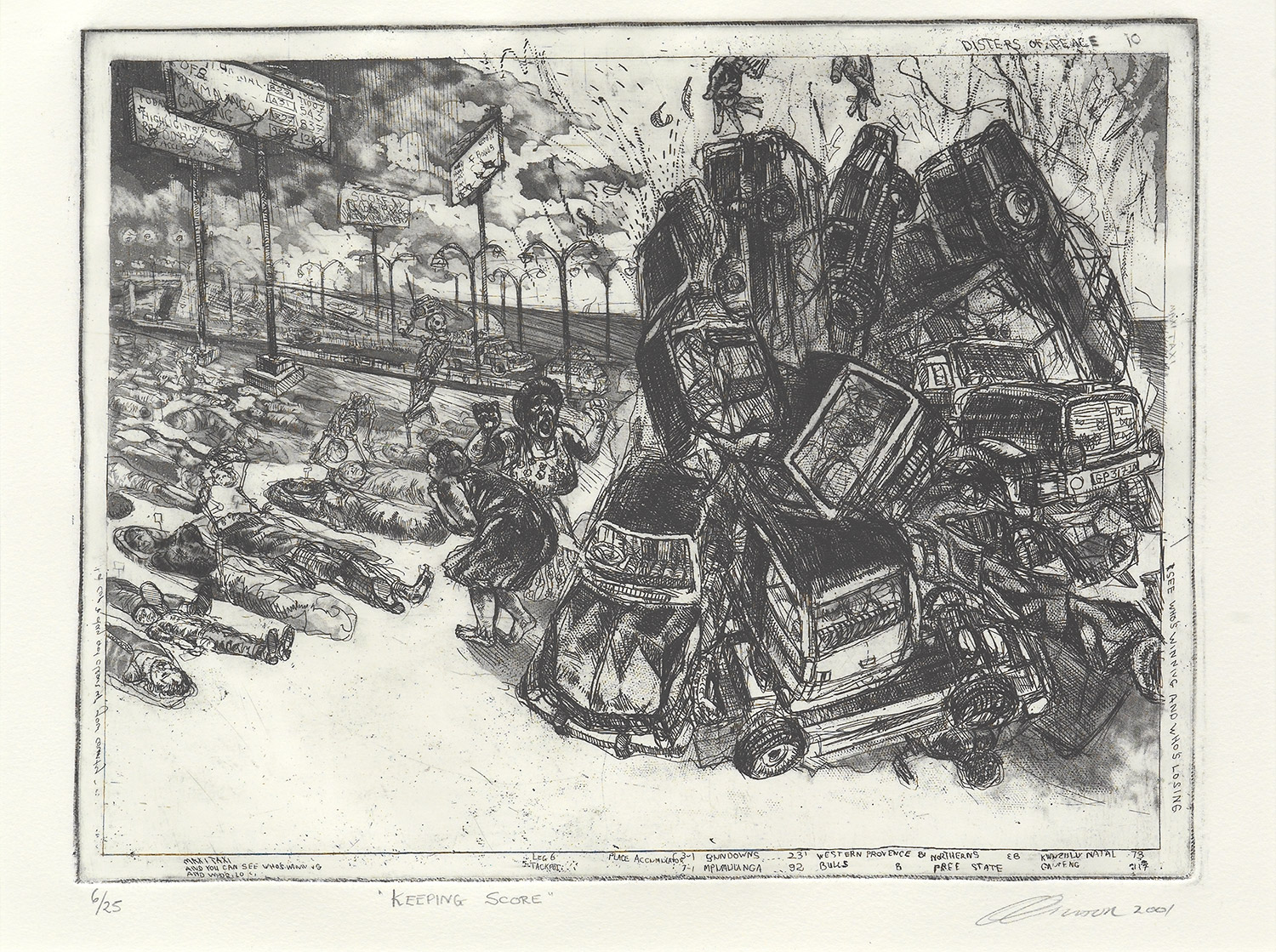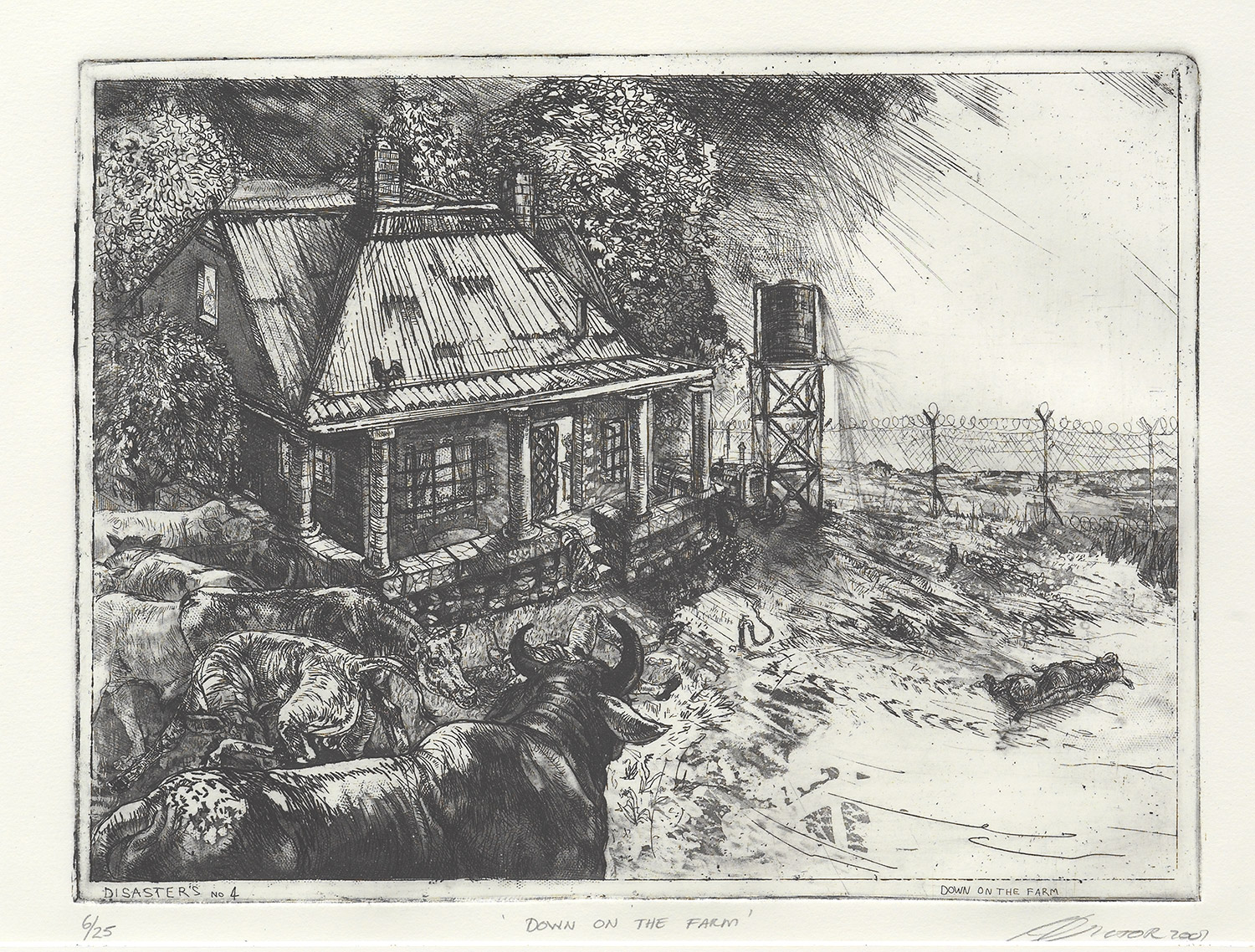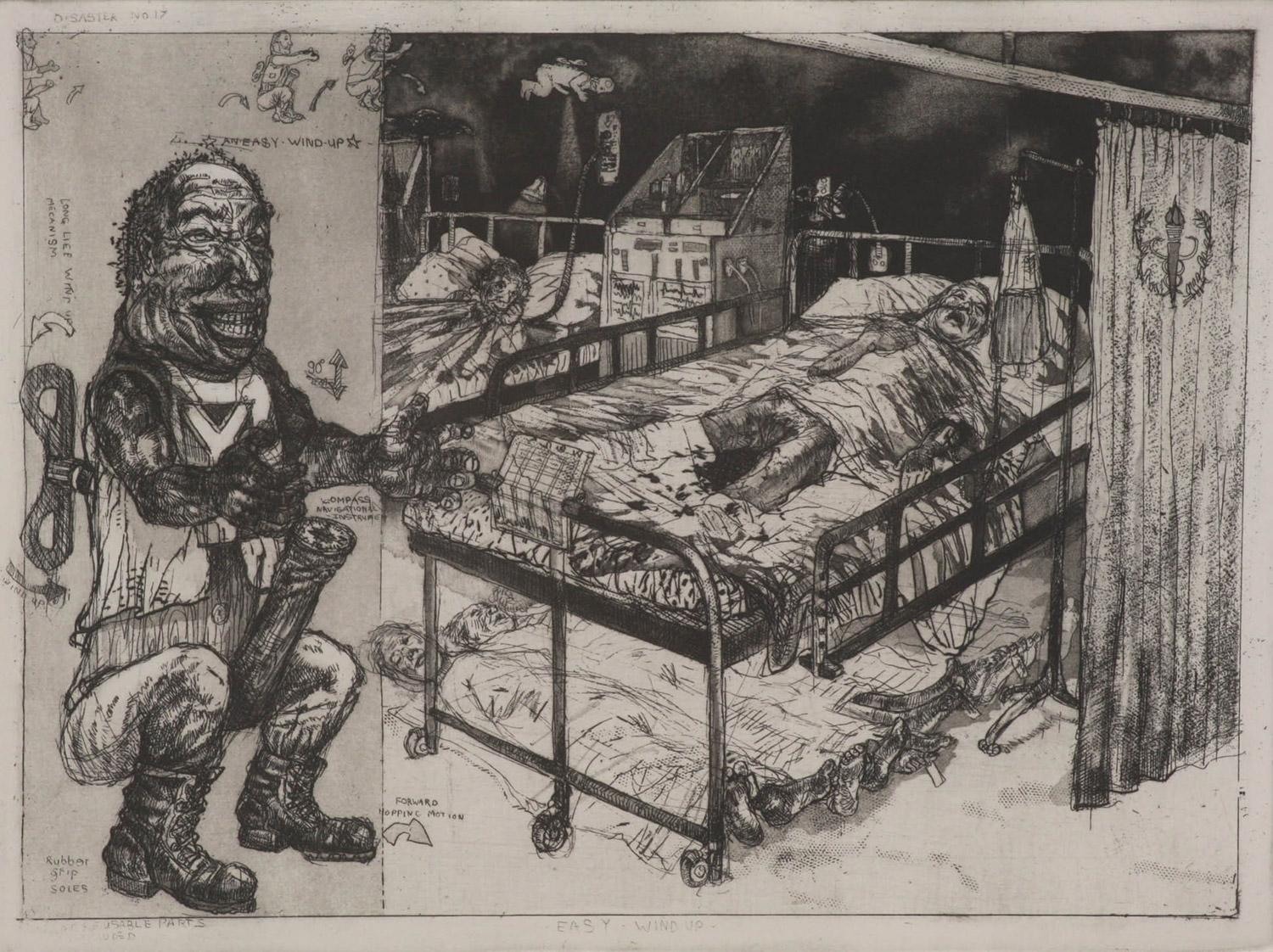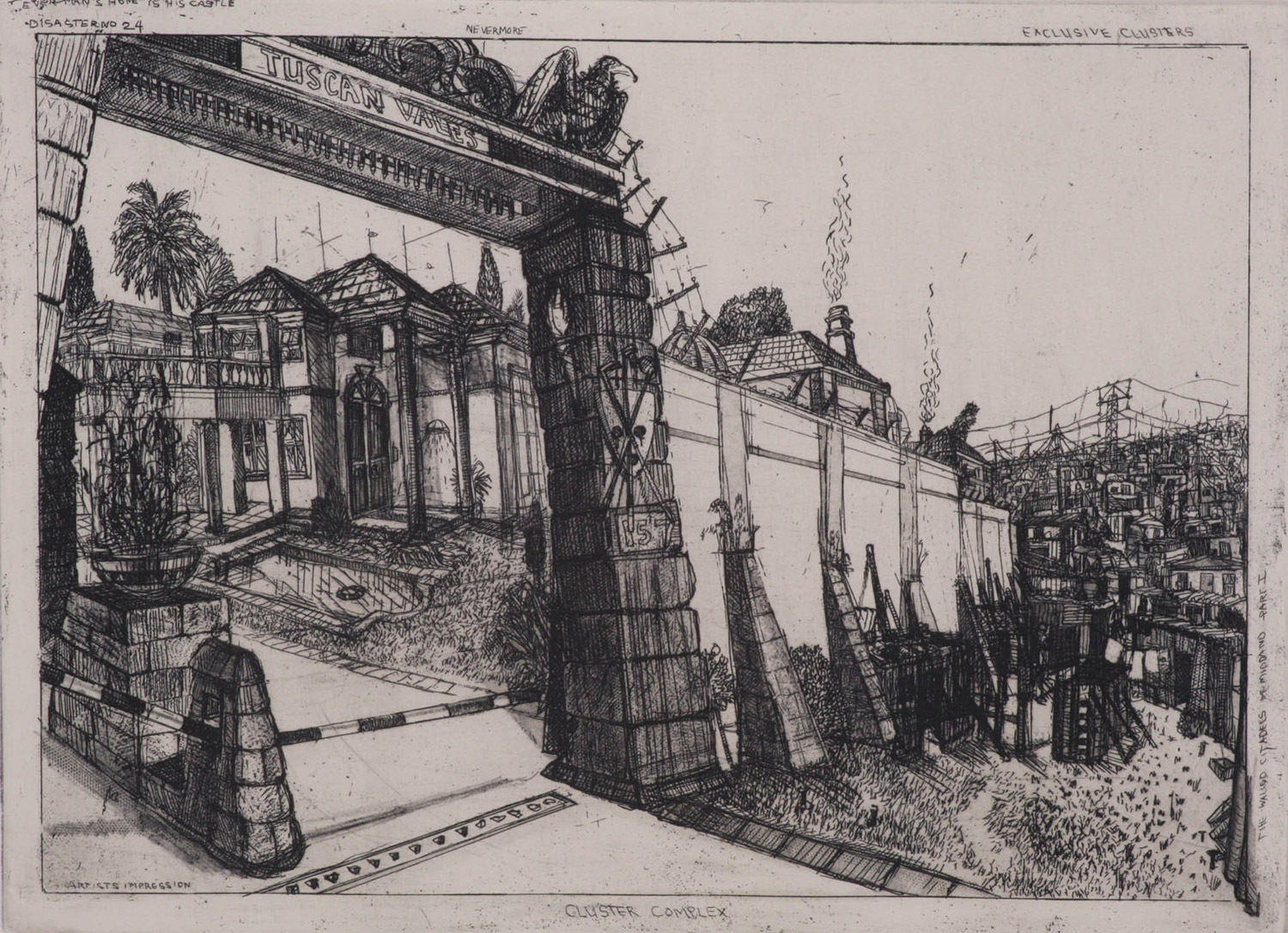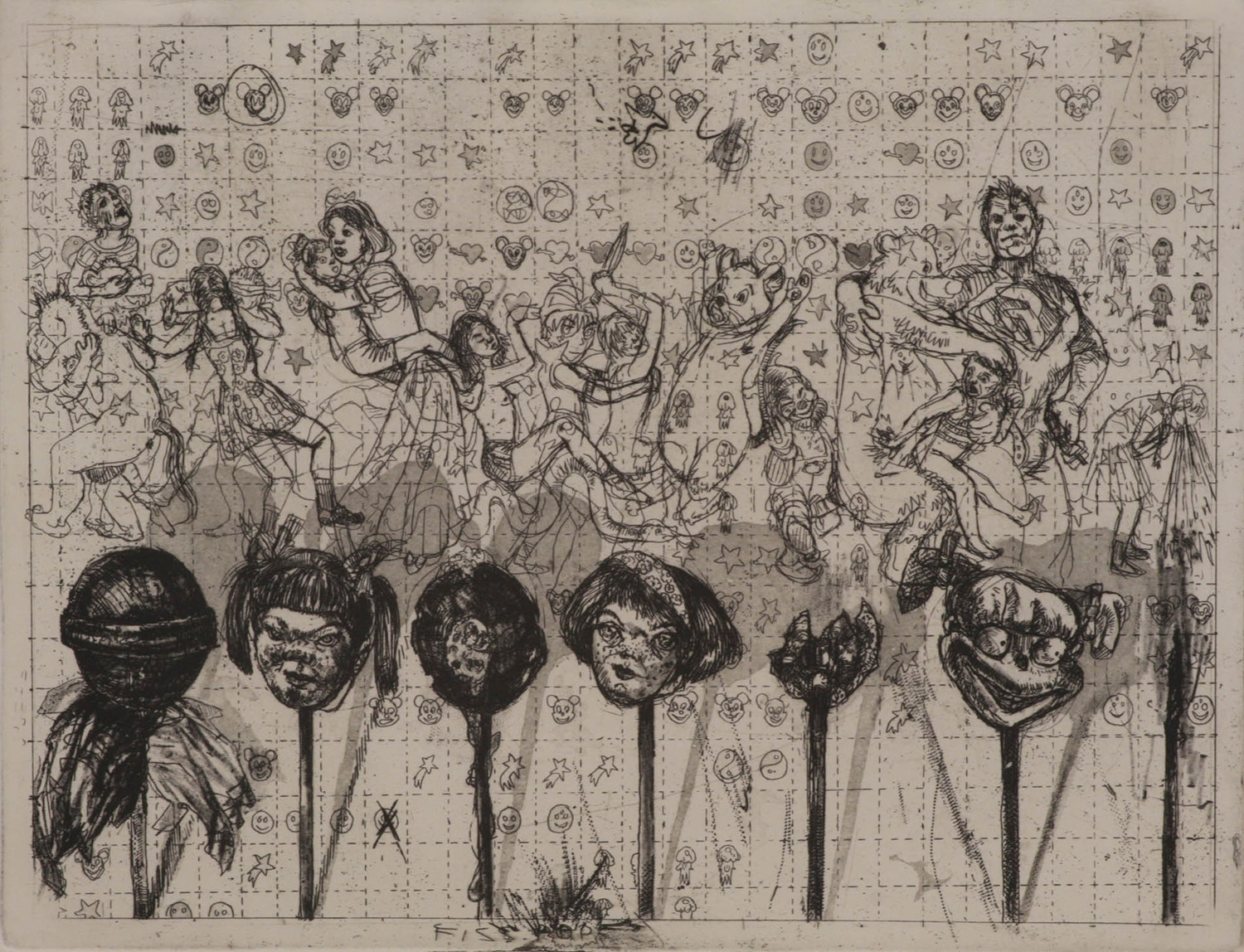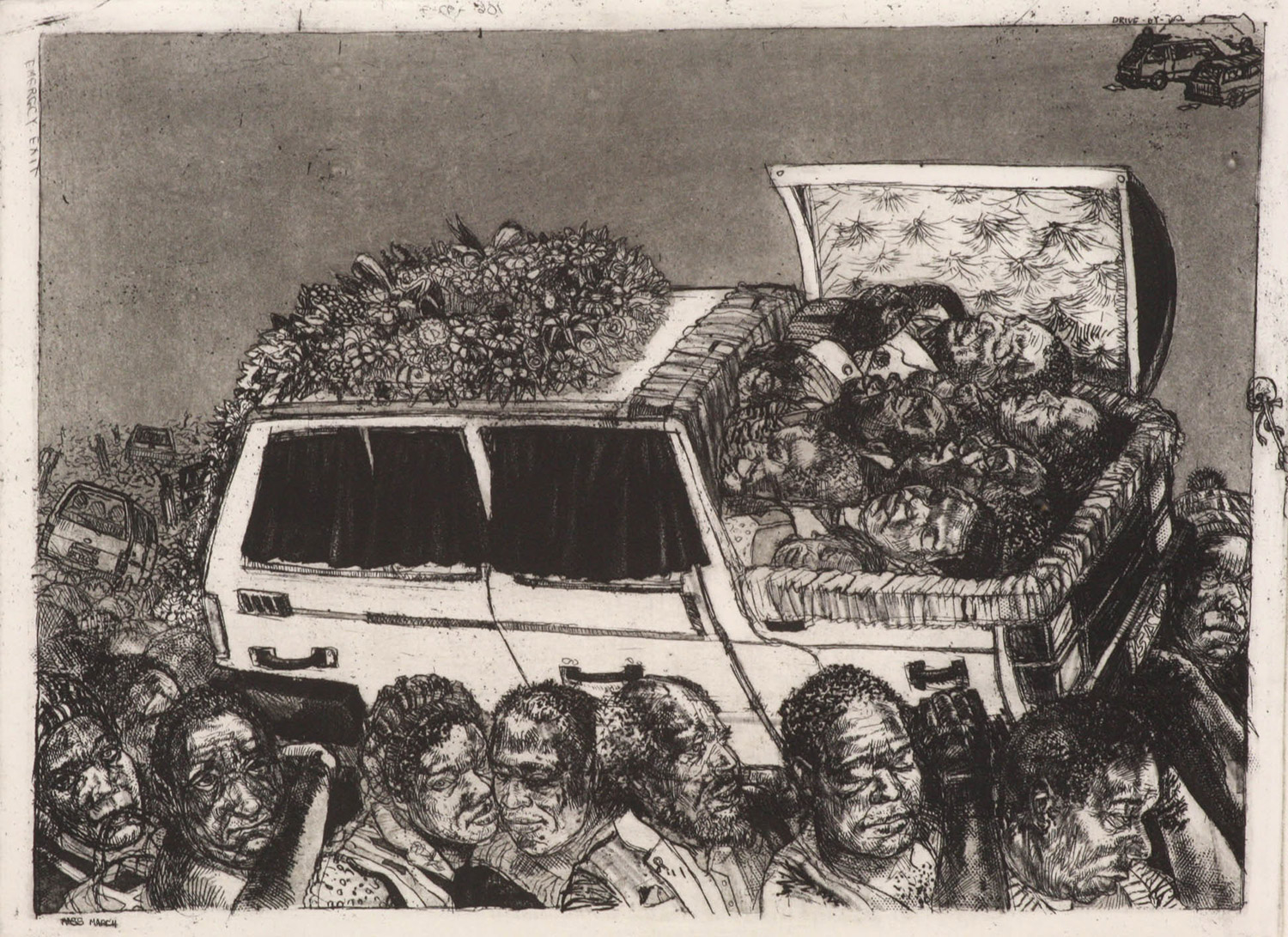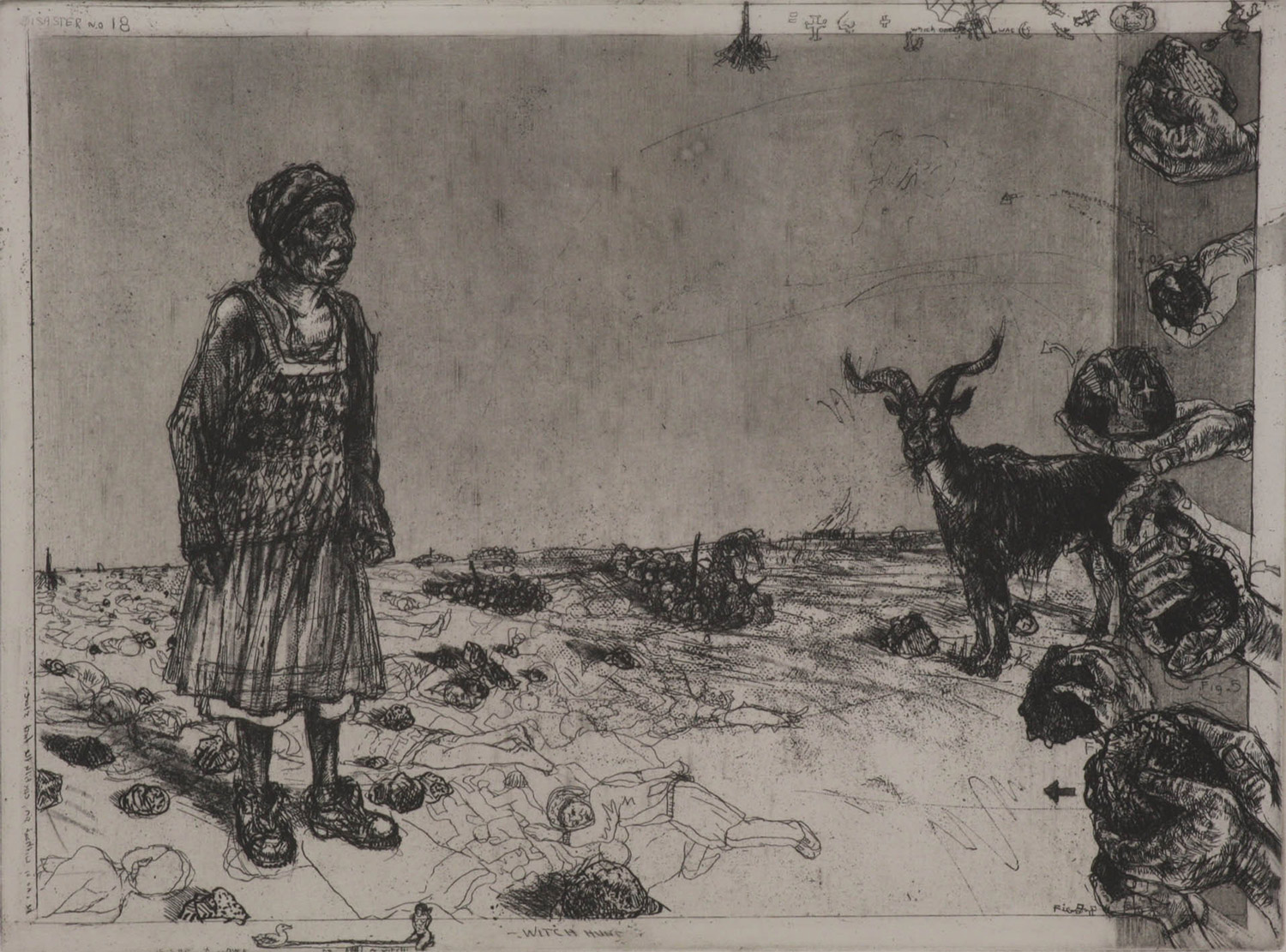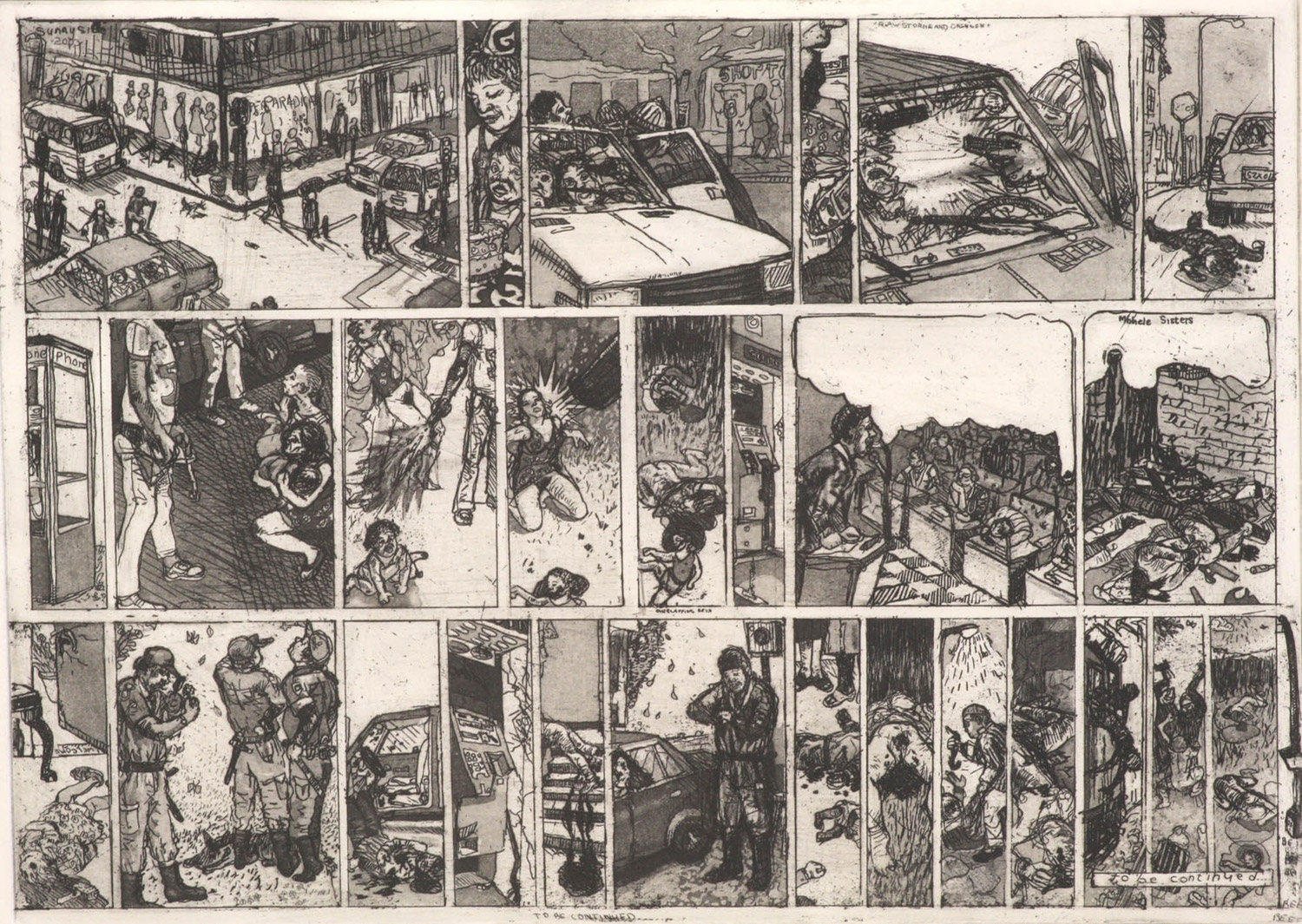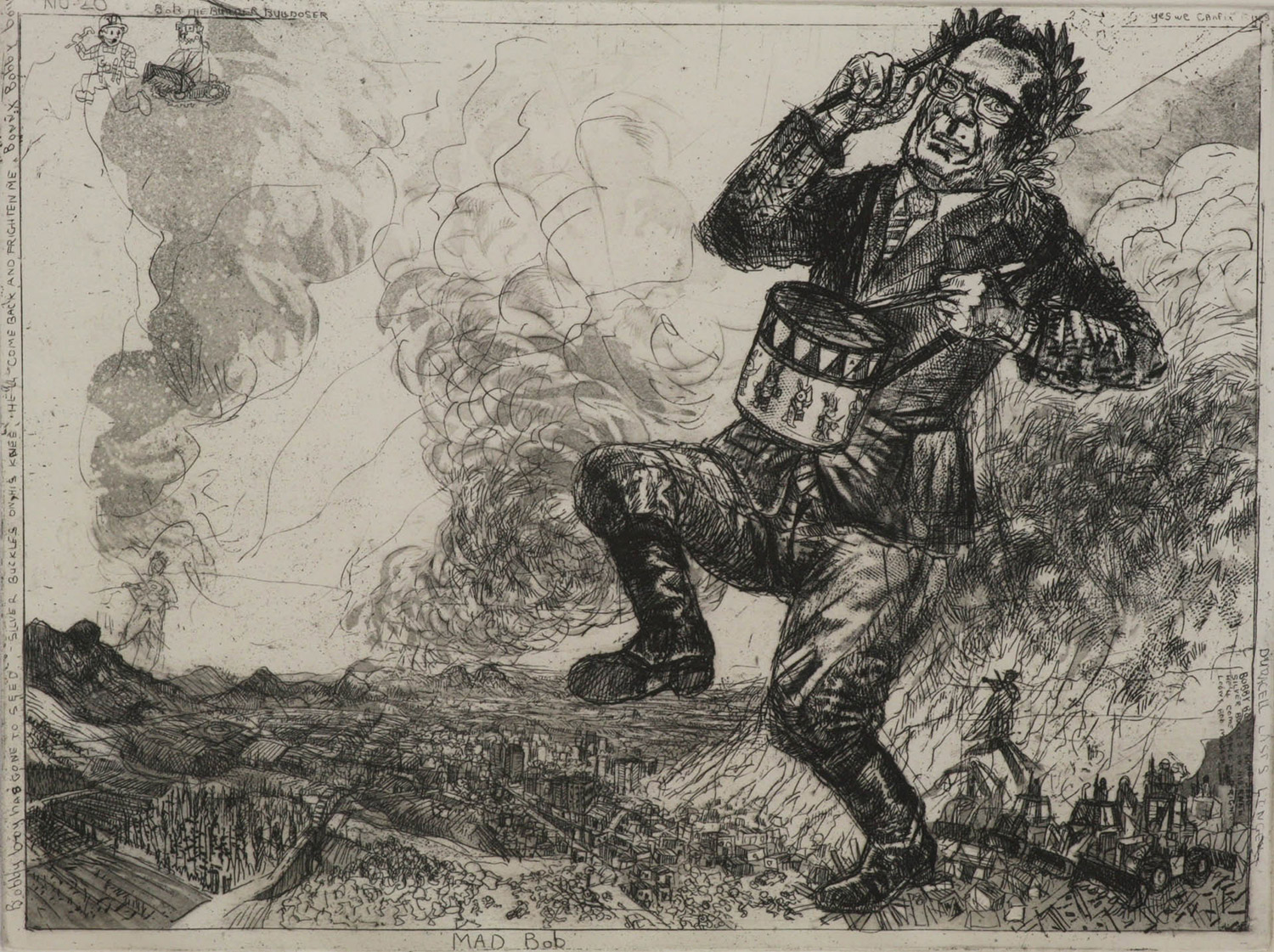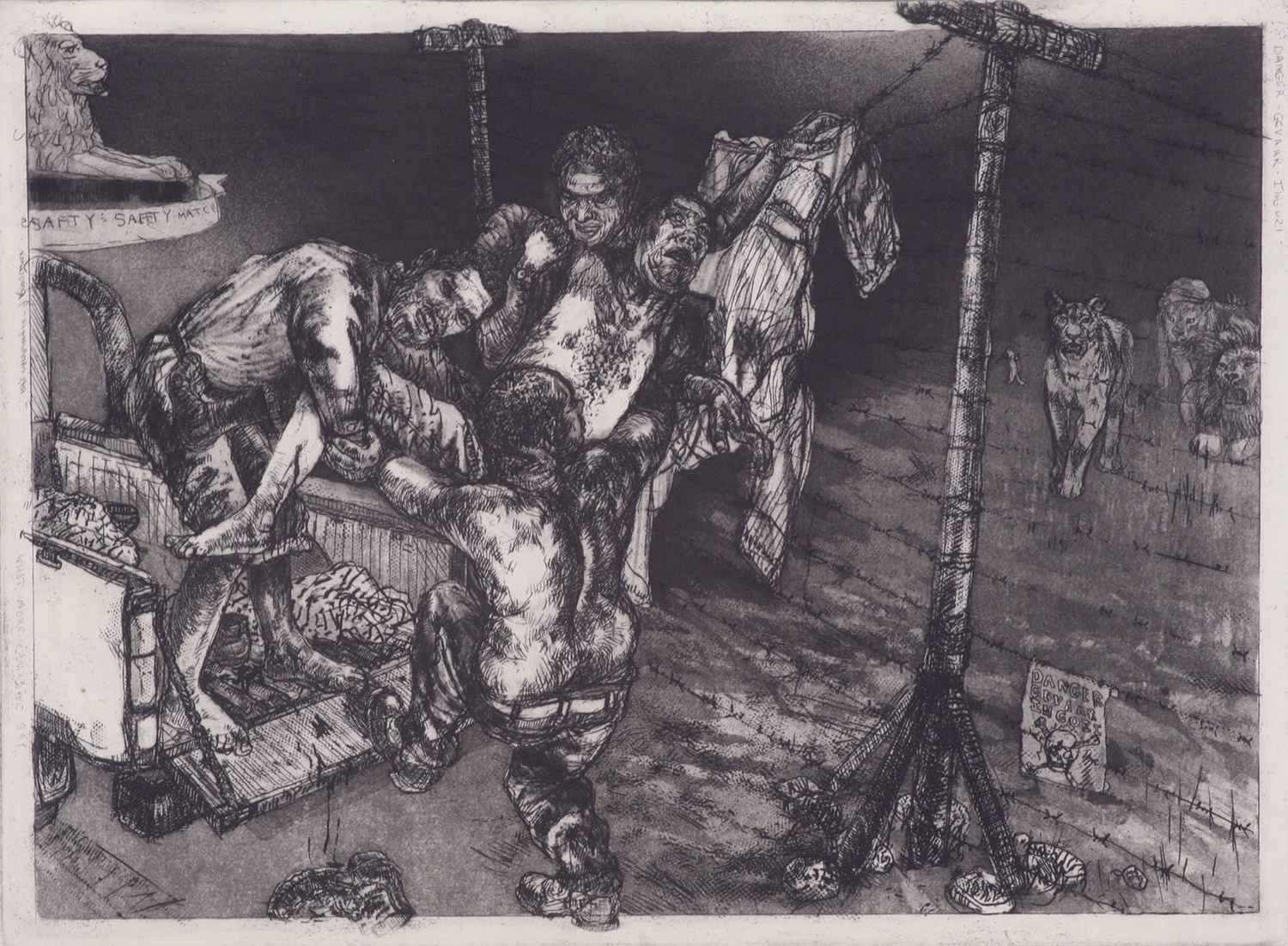Diane VICTOR (b. 1964)
Stained Gods I, Ii And III (Triptych)
2005
charcoal on paper
150 x 77 cm each
The power of Diane Victor’s work lies not only in her technical mastery of graphic media but also in her intense response to social injustices. She embraces taboo and controversy in her obsessive etchings and finely worked drawings to depict the lingering racial divide, corruption, and gender inequity that continue to haunt post-Apartheid South Africa. The dense symbolic language of her work draws on classical mythology and allegory knotted together with African and South African themes and landscapes.
In her opening speech at the book launch of TAXI 013 Diane Victor in March 2008, Karen von Veh, Professor of Visual Art at the University of… Continue Reading
‘The Sleeping Dead – Johnson Vermont’
1998
charcoal and pastel on paper
150 x 180 cm
This immaculately detailed work depicts the topography of the American town of Johnson, Vermont from above, as if the artist herself were one of the dreamers suspended, cloud-like, above the town. It is as if the entangled bodies of the sleepers in the thrall of their dreams jointly constitute the mysterious id or secret conscience of this apparently innocent little town. When the townsfolk disappear into a dream state their embodied emotions hover above the pristine topography of the place, like characters in a play by Thornton Wilder.
EM(BRACE)
2003
mixed media on paper
198 x 86 cm
Diane Victor’s images explore the effects of everyday abuses of power – not just in public and social terms, but also in intimate psycho-sexual terms – the ways in which social and sexual dominance is enacted on the human body and psyche. In this darkly sensuous work, the body of a black man appears perversely trussed up in a white corset or brace and other constricting S&M-style garb. His movements are fiercely restricted, his body held rigid by the bracing armature of whiteness – a visceral metaphor for the restrictive effects of political power on the black body.
In Fugitive Forms: Smoke drawings of Diane Victor, Lalie Daneas writes: ‘She [Victor] has cultivated a habit of looking, absorbing scenes in her surroundings with an intensity that sets the stage for her creation. She has admitted that she is a voyeur, saying that her interest in creating images is closely linked to her interest as observer. Drawing and printmaking are Victor’s ways of “exorcizing” her mind, purging it of what she sees.
‘In her hard-hitting imagery, Victor often explicitly illustrates the violence that people commit to their own bodies and against the bodies of others.’
In etchings like Practising Posture, which is similar in style and content to Em(brace), she ‘incorporates mezzotint on shaped plates and blind embossing’ and ‘explores black and white as metaphors of race as well as negative and positive spaces and shapes. Deep embossing, only visible through delicate shadows cast in the recesses of the paper, becomes a white tightly laced corset around the waist of a black man, implying social constraint.’
SOURCE
https://www.academia.edu/9527319/Fugitive_Forms_Diane_Victors_Smoke_Portraits.
What’s Bred In The Bone Comes Out In The Flesh
1994
etching
edition 65/65
45 x 37 cm
In this gothic scene, a woman in a sombre, but grandiose dress that recalls the pomp and ceremony of 19th-century Europe is pictured against a rugged rural landscape and a vast foreboding sky. Her worn face, rugged arms and large hands bespeak toughness and strength, and yet her arms appear bound – crossed at her waist in a discordant gesture of constriction. In her hands, she holds a large fish and what appears to be a chicken head or some other animal body part. There is a ritualistic pagan air about her, which is reinforced by the talismanic items depicted in the semi-abstract pictorial plane to the left of the portrait: two wooden sticks bound in the form of a cross and a phallic object that could be an official stamp used to impress a pattern or mark on the surface of the page. ‘Figures and images in Diane’s drawings are conceptually collaged into scenarios, yet do not maintain a one-to-one relation with each other,’ writes Herlo van Rensburg in an essay entitled ‘Purging in the work of Diane Victor: Contradiction and Convergence’ (1996). ‘Instead, iconographical motifs are dissociated in games of irony, parody, innuendo and displacement, continuously dissolving, or at least, checkmating, all narrative structures.’
This work recalls the reimagined fairy stories of English novelist, short story writer and journalist Angela Carter, known for her feminist, magical realism and picaresque works. Writing about Carter’s influential essay, The Sadeian Woman and the Ideology of Pornography, Marina Warner observes that: ‘It’s about desire and its destruction, the self-immolation of women, how women collude and connive with their condition of enslavement. She was much more independent-minded than the traditional feminist of her time.’ Warner’s words resonate in relation to this etching by Victor.
Sperm Head
2003
etching & embossing
320 x 240 mm
In this stark and unsettling etching, numerous sperm-like shapes embossed into the surface of the paper swim toward a menacing form that resembles a boxing glove. Ringed by a sharply studded strap, the phallic shape seems about to burst beyond its limits. The baldness of the sexual metaphor is oddly humorous, but also a disturbing image that marries the idea of sex and procreation with the idea of innate violence or force. It is as if the spermatozoa are drawn to the menacing coiled form, giving rise to the idea that there is something irrevocably dark and violent about the very nature of creation. Although Victor’s work is often quite strongly narrative in its content, this work is an unusually abstract evocation of sexual power.
Great White
1997
etching
edition 19/20
size unknown
Lewdness and indecency are common in Victor’s artworks, which are intended to shock and disrupt her viewers out of a state of social anaesthesia or numbness. In this image, the viewer is placed in the position of a peeping Tom, spying through a keyhole onto a scene of depravity. Two figures in a plush bedroom (note the ornate headboard and pleated bed cover) are locked into sexual embrace. The legs of the figure beneath are widely sprawled, while the figure above smothers her with his body, his genitalia exposed from behind. A flag, symbol of nationalism, flaps limply alongside the bed, while the flagpole appears to be protruding from the dominant figure’s backside.
Triggered by the title, the scene recalls raunchy capers like the alleged affair between former Afrikaner Weerstandsbeweging (AWB) leader Eugène Terre’Blanche and Sunday Times newspaper columnist Jani Allan in the late 1980s, and the kinds of secret excesses that go on behind closed doors and beneath the surface of repressive societies.
Adoration of St Eugene
2001/03
etching
edition 13/25
38.5 x 61 cm
In her essay, ‘The intersection of Christianity and Politics in South African Art: A comparative analysis of selected images since 1960’ (De Arte No 85, 2002), Karen von Veh describes this work as a ‘quasi -religious work’ that satirises an apartheid politician. ‘The physiognomy of Eugène Terre’Blanche, who was a radical right wing politician, leader of the Afrikaner Weerstandsbeweging and staunch upholder of apartheid, is accurately depicted,’ she writes. ‘He is placed on a podium with phallic microphones as if at a press conference, but he is dressed in a corset instead of his ubiquitous safari suit, and sprouts ludicrously small wings from his shoulders. The wings are held up by two pieces of string so they can… Continue Reading
Blind Justice – Disasters Of Peace Part I
2001 – 2003
from a series of 16 etchings
edition 6/25
25.8 x 32.8 cm
In 10 Years 100 Artists: Art in a Democratic South Africa edited by Sophie Perryer (Struik, 2005), Virginia MacKenny writes: ‘Singularly devoid of any classicising hope of order, [Victor’s] images recall Breughel or Bosch in their pessimistic view of the world and the heaping of one folly on top of another. In The Disasters of Peace (2001 – 03), its debt to Goya evident in its ironic title, a series of etchings chronicles the ills of South African society. The stage is crammed with child abuse, murder, family killings, racism, hijacks and HIV, while, presiding over the events, a hooded/blinded judge receives fellatio under his bench, feeds his goldfish and leaves his gavel resting on his judge’s desk. The unsuspecting public in the viewing gallery looks on, unaware. ‘Victor’s work is evocative of the grand narrative traditions of the past. Portraying the evils of the world, her… Continue Reading
An Easy Wind Up – Disasters Of Peace Part II
2006
from a series of 8 etchings
edition 6/25
21.5 x 29.5 cm
The initial idea and inspiration for these images came from the print series The Disasters of War, a series of 82 prints created between 1810 and 1820 by the Spanish painter and printmaker Francisco Goya (1746 – 1828). Although Goya did not make known his intention when creating the plates, art historians view them as a visual protest against the violence of the 1808 Dos de Mayo Uprising, the subsequent Peninsula War of 1808–14 and the setbacks to the liberal cause following the restoration of the Bourbon in 1814.
Commenting on her inspiration for this series, Victor has commented: ‘The images I am working with are taken from our daily media coverage of recent and almost commonplace happenings in newspapers, on TV and on radio… Continue Reading
BIOGRAPHY
Renowned artist and printmaker, Diane Victor is known for her biting satirical humour and unflinchingly visceral commentary on South African society and its ills.
Born in Witbank, Victor received her BA Fine Arts Degree from the University of the Witwatersrand with a major in Printmaking. In addition to graduating with distinction and winning various awards, she also became the youngest recipient of the prestigious Volkskas Atelier Award in 1988. The Volkskas Award granted Victor a ten-month stay at the Cité International des Artes in Paris, allowing her time to work collaboratively with other experienced printmakers and to observe and reflect on a society very different from her own.
The power of Victor’s work lies not only in her expert printmaking, technical skill and compulsive linear detail, but also in her intense response to social injustices. She takes on taboo and controversy in her obsessive etchings and finely worked drawings to depict the lingering racial divide, corruption and gender inequity that continue to haunt post-apartheid South Africa.
The dense symbolic language of her work draws on classical mythology and allegory knotted together with African and South African themes and landscapes. Violence, racial anxiety and sexual repression are common ideas represented in her works. Animals also feature strongly.
To support her vigorous artistic career, Victor has, since 1990, held various positions teaching drawing and printmaking at various South African institutions including the University of Pretoria, Wits Technikon, Pretoria Technikon, Open Window Academy, Vaal Triangle Technikon, the University of the Witwatersrand, Rhodes University and the University of Johannesburg.
She was the subject of TAXI-013, part of TAXI Art Book series released by David Krut Publishing. This publication was followed, in January 2012, by Burning the Candle at Both Ends, published to co-incide with Victor’s two-part exhibition Ashes to Ashes and Smoke to Dust at the University of Johannesburg Art Gallery. In April 2012, Burning the Candle at Both Ends was presented at an artist talk at the New York Public Library, with Victor in conversation with Judith Hecker, Assistant Curator, Department of Prints and Illustrated Books at MoMA and David Krut.
Victor has exhibited at numerous venues around South Africa and internationally, some of which include the UNISA Gallery, Fried Contemporary, MoMA New York, Faulconer Gallery, The Highpoint Center for printmaking, The Gus Fisher Gallery, National Museum of Contemporary Art Oslo, Yale University Art Gallery, The Contemporary Museum Honolulu, and Australia and Adelaide Central Gallery.
Her works are included in many collections, including The Metropolitan Museum of Art, NY; Museum of Modern Art, NY; New York Public Library, NY; Baltimore Museum of Art, MD; the Minneapolis Institute of Arts, MN; Sasol; Santam; Pretoria Art Museum; Johannesburg Art Gallery; Durban Art Museum; the SABC Art Collection and others.
Victor lives and works in Johannesburg and is a senior Fine Art lecturer at the University of Pretoria’s Department of Visual Art.


